|

HOME |
ABOUT | INDEX |
NEWS |
FACEBOOK |
CONTACT
ARTS
Culture |
Entertainment | Visual
| Performing | Music | Dance | Poetry | Comedy
Queer Arts and
Culture
Vibrant and critical expression of identity,
resistance, and community that has evolved across eras
and mediums...
By
creating a platform for silenced voices, queer art not
only challenges oppressive systems but also enriches
mainstream culture with diverse perspectives. From
hidden coded meanings in the past to today's
unapologetic works, LGBTQ art stands as a powerful
testament to the community's resilience and creativity.
A
legacy of resistance and visibility...
Throughout history, LGBTQ artists have used their craft
to navigate and subvert societal constraints. Before the
rise of modern LGBTQ rights movements, many artists used
visual codes and subtle allusions to express their
identities safely. Examples can be found throughout art
history, with the story of Saint Sebastian frequently
noted as a popular homoerotic symbol. Following major
turning points like the Stonewall Inn riots in 1969,
queer artists began to communicate more openly through
their work.

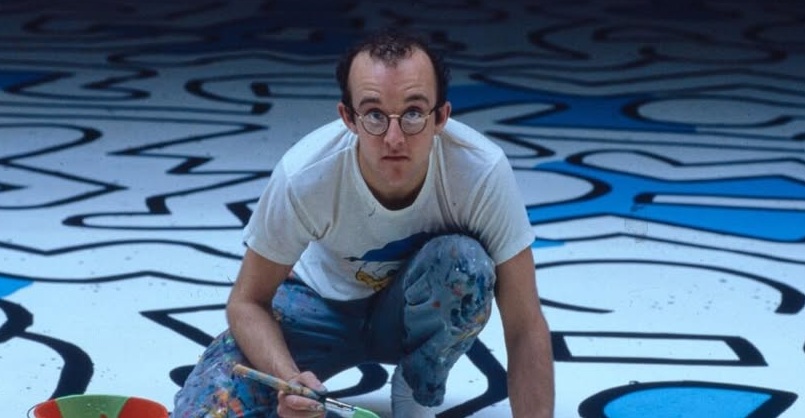

Richard Blanco: Inauguration Poem
Queer Composers You Should Know
Tig Nataro Reads Poem: Tincture by Andrea Gibson
Autostraddle: Lesbian
Photographers You Should Know About
Advocate: Emerging Queer Artists
This Photographer Left Her Husband for a Woman and
Documented It in Portraits
Artist Jaime Hayde Illustrates Happiness of Gay Love
Celebrating Drag in All its Glory: Artist Rachel
Rampleman's 'Life is Drag' Exhibition
Andrea Gibson: Reading Her Poetry
NPR: When Art is Queer
This demonstrative shift became crucial during the AIDS
crisis of the 1980s and 90s, when artists like Keith
Haring and David Wojnarowicz transformed their art into
political statements and acts of activism. Performance
art revealed the fragility of the body as artists living
with HIV/AIDS insisted on performing, often as an urgent
form of protest. One of the most significant public art
projects to emerge from this era was the AIDS Memorial
Quilt, which allowed people to memorialize loved ones
lost to the disease.
Diverse themes and media...
LGBTQ art explores a variety of themes, reflecting the
community's complex experiences. Artists delve into
issues of alienation, the complexities of
self-identification, and the nuances of human
connection, particularly through a lens of tenderness
and sensuality. Queer artists also challenge traditional
representations of the body, offering alternative
narratives that embrace different forms of beauty and
intimacy. For example, photographers like Catherine Opie
and Zanele Muholi use striking portraiture to highlight
the vulnerability and resilience of marginalized Black
and queer bodies.
The scope of LGBTQ art is not confined to a single style
or medium. Artists utilize a broad range of creative
forms to tell their stories:
Visual
Art: Painters like Mickalene Thomas and Salman Toor
create vibrant works exploring Black and queer identity.
Photography: Nan Goldin's intimate snapshots documented
queer life in the 80s and 90s, while photographers like
Marie Hoeg and her partner Bolette Berg subverted gender
roles in private photos over a century ago.
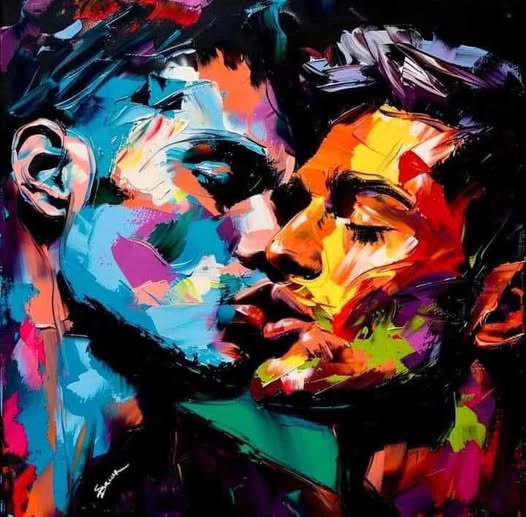
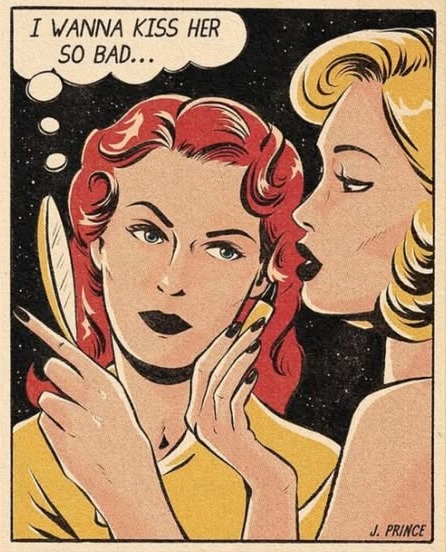
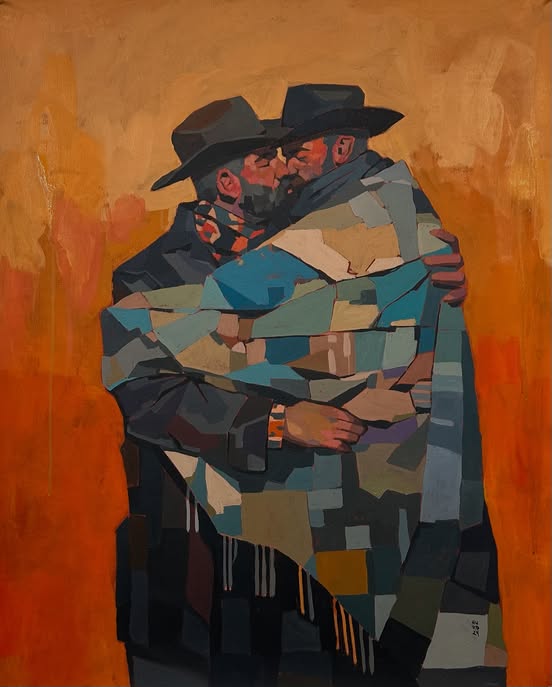
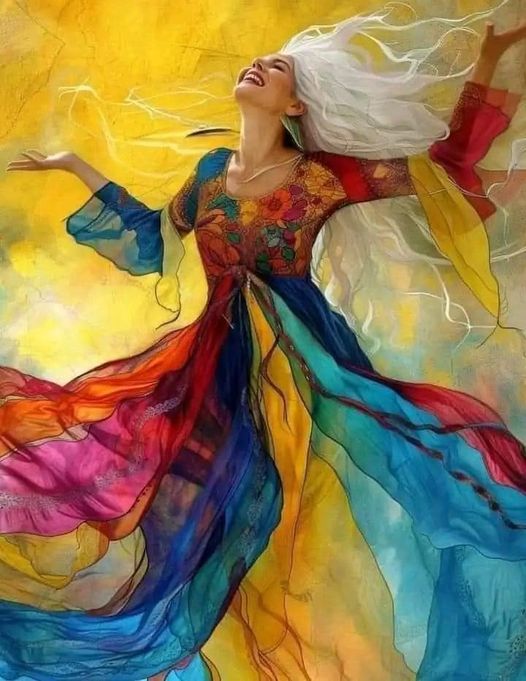
Pride and Poetry
Strictly Come Dancing: LGBTQ Fans Blown
Away by Same-Sex Dance
This Photographer Left Her Husband for a Woman and
Documented It in Portraits
Vancouver Men's Chorus performs Anthem by
Leonard Cohen
Circle of Life: Featuring London Gay Men's Chorus
Two Guys Dancing
Meet the Young Artists of Provincetown
The Lesbian Photo Book That Changed
Everything
Performance: Performance art, including drag and
experimental theater, challenges societal norms and
creates platforms for self-expression.
Fashion
and Music: Queer influence has transformed mainstream
fashion through designers like Alexander McQueen and
Telfar Clemens, and artists like Lil Nas X, Troye Sivan,
and Chappell Roan have helped push queer narratives into
the pop music mainstream.
Fostering connection and change
Ultimately, LGBTQ art fosters a sense of community and
connection, providing affirmation and visibility for
queer people. By seeing themselves reflected in art,
LGBTQ individuals gain validation and empowerment. For
allies, this art serves as an educational tool that
promotes empathy and understanding across different
experiences. As queer voices gain prominence in
mainstream culture, they continue to disrupt
conventional ideas of "normalcy," inviting everyone to
embrace difference and new ways of experiencing the
human condition. In doing so, LGBTQ art ensures that the
stories and experiences of a vibrant, resilient
community are not only seen but celebrated.
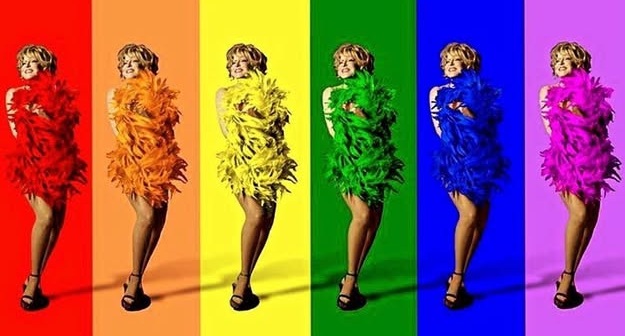
Pride Poems
What is Queer Art?
Atlanta Gay Men's Chorus: National Anthem
Queer Art: Painting a Park Bench
Rosie O’Donnell Performs Her First Ever Australian Show
Andrea Gibson, Poet Laureate of Colorado,
Dies at 49
2024's Best Queer Art and Photography
OutSpoken: LGBTQ Storytelling
Nurse Blake Is Healing the Gays, One Punchline at a Time
Steel City Men's Gay Chorus
New Netflix
Documentary Tells the History of Queer Stand-Up Comedy
Outstanding: A Comedy Revolution features several
generations of queer comedy royalty
From Tig Notaro’s legendary album Live to movies like
Bottoms, queer and trans people have been dominating the
modern comedy landscape. But until relatively recently,
that was not the case. A forthcoming documentary from
Netflix will explore the history of LGBTQ stand-up
comedy, from the days when the phrase “out comedian” was
an oxymoron to today’s renaissance.
The documentary, Outstanding: A Comedy Revolution, will
premiere on the streamer in June 2024. According to an
official description, it is the first feature-length
documentary to look at the history of queer stand-up as
“an instrument for social change over the past five
decades.”
Written and directed by Page Hurwitz, who founded a
comedy production company with Wanda Sykes in 2013,
Outstanding gathers a veritable who’s who of queer
comedy to speak to that history. Interviews and clips of
Sykes, Suzy Izzard, Hannah Gadsby, Tig Notaro, Rosie
O’Donnell, Margaret Cho, Bob the Drag Queen, and Trixie
Mattel, among many others, are all featured in the film.
The film also taps several historians and journalists
for their expertise, including Shar Jossell and Susan
Stryker.

Netflix dropped the trailer for Outstanding on YouTube,
featuring a blend of archival footage and interviews
with some of the aforementioned pioneers of queer
comedy. As Guy Branum says in the sneak peek, humor has
long served a social function for LGBTQ people beyond
just making each other laugh. “Queer people taught
America to stop being scared of us by making jokes,” he
observes.
In a statement to Variety, Hurwitz asserted that the
history of queer stand-up is intertwined with
liberation. “We don’t normally think of comedians when
we think of social movements but the talented artists in
this film helped to shift the culture in significant
ways, sometimes having to make great personal
sacrifices,” she said. “I hope this film honors and
celebrates their contributions to LGBTQ history and to
the larger community.”
Outstanding is intended to complement Stand Out,
Netflix’s 2022 special featuring sets from several of
the comedians featured in the documentary. The streamer
also recently released Gender Agenda, hosted by Hannah
Gadsby, which highlights the talents of seven trans and
genderqueer comedians.
[Source: James Factora, Them, April 2024]
Andrea Gibson: Reading Her Poetry
Celebrating Drag in All its Glory: Artist Rachel
Rampleman's 'Life is Drag' Exhibition
There’s a Scarcity of Out Ballerinas:
Queer the Ballet is Trying to Change That
New Netflix Documentary Is Telling the History of Queer
Stand-Up Comedy
Bisexual Poets You Should Be Reading
Two Guys
Dancing
The Lesbian Photo Book That Changed
Everything
Tig Notaro Realizes She is a Role Model
for Queer Women
Hannah Gadsby’s Netflix Special Features Genderqueer Comedians
Stevie Sings “Maybe This Time” - Schitt’s
Creek
Meet Comedian Nurse Blake
Vaginal Davis’ Queer Punk Art Is More Relevant than Ever
Braden Summers: LA-Based Gay Photographer Adds
Fresh Color to LGBTQ Spectrum

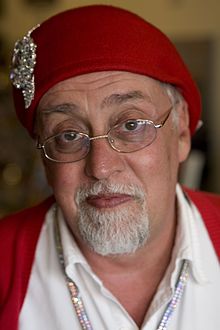


LGBTQ Visual Artists, Painters, Photographers
|
Keith
Haring
Annie Leibovitz
Frida Kahlo (Mexico)
Robert Mapplethorpe
Andy Warhol
Raphael
Perez (Israel)
Alvin
Baltrop
Terry
Hastings
Vincent
Keith (London)
Oliver
Zeuke (Germany)
Mickalene
Thomas
Heather
Glazzard
Donna
Gottschalk
Herb Ritts
Jaime
Hayde
Marcel
Duchamp
Deborah
Kass
Braden
Summers (Los Angeles)
 |
Grant Wood
(American Gothic)
Rotimi Fani Kayode (Nigeria)
Brian Kenny
Cy Twombly (England)
Steven
Menendez
Robert
Rauschenberg
Gilbert
Baker (Creator of Original Rainbow Flag)
Kehine Wiley
Zanele
Muholi (South Africa)
Richard Fung (Trinidad, Toronto)
Jasper Johns
Laurie Toby Edison
Baroness
Elsa von Freytag-Loringhoven
Ottilie
Landmark
Nora Nord
Kendrick
Daye
George
Platt Lynes
Peter
Hujar
 |

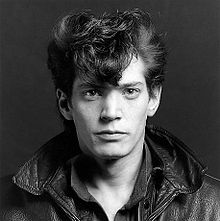
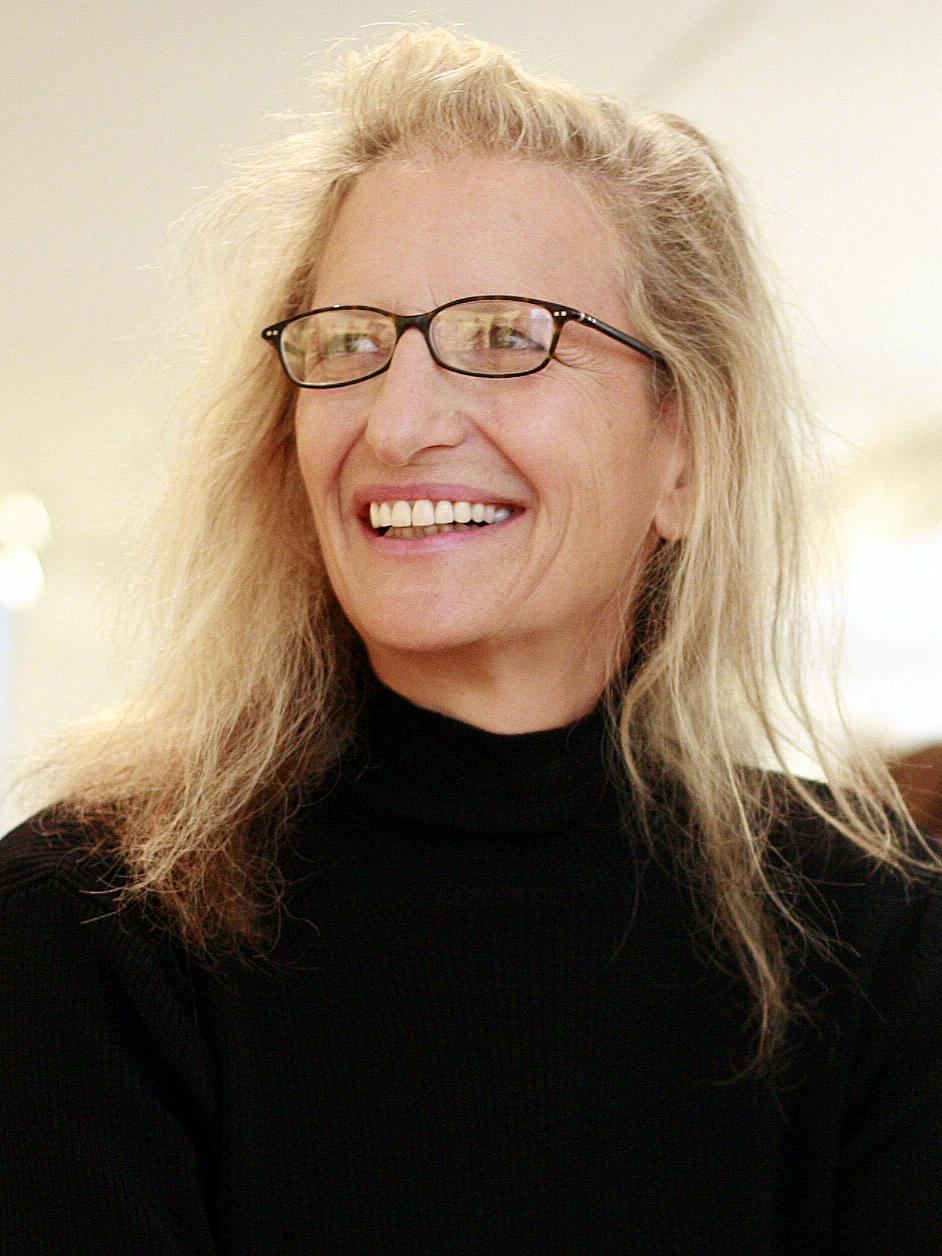
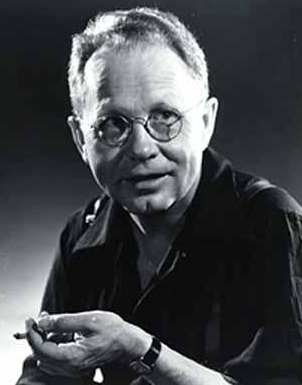
Keith Haring’s Life: TV Series by ‘Looking’ Director
Andrew Haigh
Kenney Mencher: Painter at Work
2024's Best Queer Art and Photography
Tig Nataro Reads Poem: Tincture by Andrea Gibson
First London Dyke Market in Summer 2024
New Netflix Documentary Is Telling the History of Queer
Stand-Up Comedy
Tig Notaro Realizes She is a Role Model
for Queer Women
Pride and Poetry
Hannah Gadsby’s Netflix Special Features Genderqueer Comedians
Giselle Byrd Is Putting Trans Voices Center Stage
Jazz Musician Dave Koz on Going Silver and Gay Cruising
Barry Humphries, Known for His Drag Persona Dame Edna
Everage, Dies
LGBTQ Art Shows That are Spicing Up Global Museums
Slam Poetry: Dear Straight People
Amrita
Sher-Gil (Indian)
Vaginal Davis (Germany)
Hannah Hoch (Germany)
K8 Hardy
Felix Gonzalez Torres
Ellsworth Kelly
David Hockney (England)
Adi Nes (Israel)
Betty Parsons
Zackary Drucker
Michael
Stokes
Meg Allen
Dave
LaChapelle
Vincent
Keith
Oliver Zeuke
Mel Odum
 |
Gilbert & George (England)
Touko
Laaksonen (Tom of Finland)
Catherine Opie
Berenice Abbott
Isaac Julien (England)
Lope Navo
Alice Neel (England)
David Wojnarowicz
Thomas
Lanigan-Schmidt
Leo
Herrera
Ron Amato
Terry
Hastings
Steven
Menendez
Joan E.
Biren (JEB)
Hinda
Schuman
Nicole
Coenan (Canada)
 |
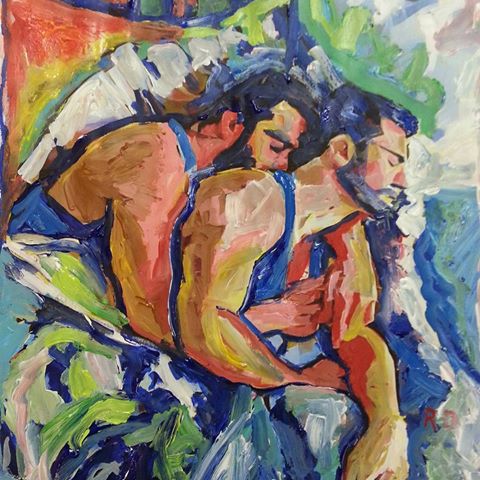


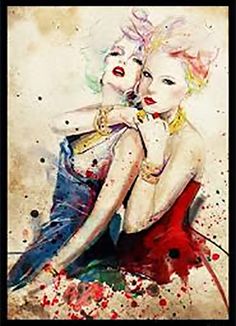
What is Queer Art?
Rosie O’Donnell Performs Her First Ever Australian Show
Andrea Gibson, Poet Laureate of Colorado,
Dies at 49
Pride Poem: The Root of All
The Lesbian Photo Book That Changed
Everything
Gay Photographer George Platt Lynes
Jazz Musician Dave Koz on Going Silver and Gay Cruising
Randy Rainbow: Making a Difference Award Honoree
This Man's Illustrations About Life With
His Boyfriend Are Absolutely Adorable
This Artist Is Giving Lesbian Couples The Retro, Pinup
Treatment
Pieces from LGBTQ Artists at Superfine
Art Fair in New York
Feed The Id: Live On The Lake with Cory
Wong and Dave Koz
SNL: Ariana DeBose and Kate McKinnon
Dancing with the Stars: JoJo Siwa’s
Viennese Waltz
Ellen DeGeneres: Gay
Cartoon Characters
Glenn Copeland: Trans
Musical Genius
Steven Menendez: Photos Celebrating the
Earth and the Male Form
OutSpoken: LGBTQ Storytelling

Queer Art
Queer art,
also known as LGBTQ art or queer aesthetics, broadly
refers to modern and contemporary visual art practices
that draw on lesbian, gay, bisexual, transgender, and
queer imagery and issues. While by definition there can
be no singular "queer art", contemporary artists who
identify their practices as queer often call upon
“utopian and dystopian alternatives to the ordinary,
adopt outlaw stances, embrace criminality and opacity,
and forge unprecedented kinships and relationships.”
Queer art is also occasionally very much about sex and
the embracing of unauthorized desires.
Queer art is highly site-specific, with queer art
practices emerging very differently depending on
context, the visibility of which possibly ranging from
being advocated for, to conversely being met with
backlash, censorship, or criminalization. With sex and
gender operating differently in various national,
religious, and ethnic contexts, queer art necessarily
holds varied meanings.
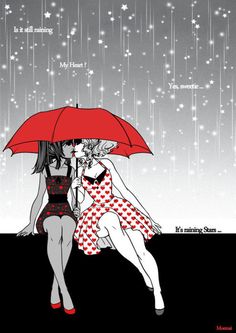



Keith Haring’s Life: TV Series by ‘Looking’ Director
Andrew Haigh
Queer Art: Painting a Park Bench
Celebrating Drag in All its Glory: Artist Rachel
Rampleman's 'Life is Drag' Exhibition
Kenney Mencher:
Genderqueer Artist
Two Guys Dancing
2024's Best Queer Art and Photography
First London Dyke Market in Summer 2024
Andrea Gibson: Reading Her Poetry
Nurse Blake On Comedy Tour, Viral Fame, LGBTQ Advocacy
Slam Poetry: Dear Straight People
Steel City Men's Gay Chorus
Beautiful Thing Celebrates 30th
Anniversary Through a Black Queer Lens
Minnie Bruce Pratt: Poet, Essayist,
Activist, Dead at 76
Standup Comedian Mae Martin Calls Out
Dave Chappelle
Dancing with the Stars: JoJo Siwa’s
Viennese Waltz
While
historically, the term 'queer' is a homophobic slur from
the 1980s AIDS crisis in the United States, it has been
since re-appropriated and embraced by queer activists
and integrated into many English-speaking contexts,
academic or otherwise. International art practices by
LGBTQ individuals are thus often placed under the
umbrella term of 'queer art' within English-speaking
contexts, even though they emerge outside the historical
developments of the gender and identity politics of the
United States in the 1980s.
'Queer art' has also been used to retroactively refer to
the historic work of LGBTQ artists who practiced at a
time before present-day terminology of ‘lesbian’, ‘gay’,
‘bisexual’ and ‘trans’ were recognized, as seen deployed
in the 2017 exhibition by Tate, Queer British Art
1861–1967. The term “queer” is situated in the politics
of non-normative, gay, lesbian and bisexual communities,
though it is not equivalent to such categories, and
remains a fluid identity.
Adhering to no particular style or medium, queer art
practices may span performance art, video art,
installation, drawing, painting, sculpture, photography,
film, and mixed media, among many others.




Pride Poems
What is Queer Art?
Kenney Mencher: Painter at Work
Atlanta Gay Men's Chorus: National Anthem
Heather Shaw: Roasting Kim Davis
Andrea Gibson, Poet Laureate of Colorado,
Dies at 49
Tig Nataro Reads Poem: Tincture by Andrea Gibson
There’s a Scarcity of Out Ballerinas:
Queer the Ballet is Trying to Change That
Sculpture Unveiled in NYC
Honoring Trans and Nonbinary Communities
Philadelphia: Opera Scene
LGBTQ Theatre Makers to
Pay Attention to Right Now
Queer Composers You Should Know
Info: LGBTQ Music and Songs
LGBTQ Short Stories
Alison Bechdel: Winner of McArthur Grant
Alison Bechdel, a lesbian artist and writer from
Vermont, was the winner of the 2014 Mac Arthur
Foundation Fellowship award, commonly referred to as the
Genius Grant. She is known for such literary works as
Fun Home, Dykes to Watch Out For, and Are You My
Mother?
Alison Bechdel is a cartoonist and graphic memoirist
exploring the complexities of familial relationships in
multilayered works that use the interplay of word and
image to weave sophisticated narratives. Bechdel’s
command of sequential narrative and her aesthetic as a
visual artist was established in her long-running comic
strip, Dykes to Watch Out For (1983–2008), which
realistically captured the lives of women in the lesbian
community as they influenced and were influenced by the
important cultural and political events of the day.



Vermont Artist Receives MacArthur Fellowship
Washington Post: Bechdel Wins Genius Grant
Washington Post: Graphic Novelist Breaks Ground
MacArthur
Foundation: Alison Bechdel
Home
Page: Dykes to Watch Out For
Wikipedia: Dykes to Watch Out For
Fun Home: Ring of Keys
Garnering a devoted and diverse following, this
pioneering work was a precursor to her book-length
graphic memoirs. Fun Home: A Family Tragicomic
(2006) is a nuanced depiction of a childhood spent in an
artistic family in a small Pennsylvania town and of her
relationship with her father, a high school English
teacher and funeral home director. An impeccable
observer and record keeper, Bechdel incorporates
drawings of archival materials, such as diaries,
letters, photographs, and news clippings, as well as a
variety of literary references in deep reflections into
her own past.
Bechdel came out as a lesbian at age 19. Bechdel's
gender and sexual identity are a large part of the core
message of her work. "The secret subversive goal of my
work is to show that women, not just lesbians, are
regular human beings," she explains. In February 2004,
Bechdel married her girlfriend since 1992, Amy Rubin, in
a civil ceremony in San Francisco. Bechdel and Rubin
separated in 2006. As of 2013, Bechdel lives in Bolton,
Vermont with her partner, Holly Rae Taylor.
Rosie O’Donnell Performs Her First Ever Australian Show
Jazz Musician Dave Koz on Going Silver and Gay Cruising
Janelle Monae: Being a Queer
Black Artist
Kehinde Wiley: Black Gay Artist
Slam Poetry: Dear Straight People
Elska Magazine: Photo
Spread of Gorgeous Global Men
Queer Men and Their Tattoos
Gay Comedian Joe Lycett: Live at the Apollo
Tig Notaro Montage
OutSpoken: LGBTQ Storytelling
Nurse Blake Is Healing the Gays, One Punchline at a Time
Gay Photographer: Terry Hastings
Poetry Slam: Princess in Distress
LGBTQ Writers Everyone Should Know
Taboo: Musical by Boy George




LGBTQ Musicians
and Composers
|
Leonard Bernstein
Aaron Copland
Pyotr Ilyich Tchaikovsky
Cole Porter
Gertrude
"Ma" Rainey
Dave Koz
Samuel Barber
Ethel
Waters
Andy Bey
Johannes Brahms
Bessie
Smith
John Cage
Billy
Strayhorn
Jennifer
Higdon
Jean-Baptiste de Lully
Ethel Smyth
Lou Harrison
Pauline Oliveros
Angela
Morley

|
Franz
Schubert
Cecil
Taylor
Gladys
Bently
Stephen Sondheim
Igor Stravinsky
Frederic Chopin
Bill
Stewart
Nikolai Rimsky Korsakov
Gary
Burton
Maurice Ravel
Alberta
Hunter
George Friderick Handel
Fred Hersch
Patricia
Barber
Benjamin
Britten
Wendy Carlos
Nico Muhly
Julius
Eastman
Jackie
Shane

|

Andrea Gibson, Poet Laureate of Colorado,
Dies at 49
Queer Art: Painting a Park Bench
2024's Best Queer Art and Photography
First London Dyke Market in Summer 2024
Braden Summers: LA-Based Gay Photographer
Adds Fresh Color to LGBTQ Spectrum
Vaginal Davis’ Queer Punk Art Is More Relevant than Ever
Ian McKellan Reading
Harvey Milk's Hope Speech
Gay Photographer George Platt Lynes
Virtual Tours of Queer Art Shows
LA
Gay Men's Chorus: Love On Top
The Art Story: Queer Art
The Lesbian Photo Book That Changed
Everything
Superstar Tenor Russell Thomas: Being a Black Queer
Man in Opera
Hannah Gadsby: Allstars Supershow
Brilliant LGBTQ Opera Stars You Should Know
Avenue Q: If You Were Gay
Pride and Poetry
Jazz Musician Dave Koz on Going Silver and Gay
Cruising
As he prepares for a return to the Hollywood Bowl
and headlining a musical cruise, the out Grammy nominee
reflects on his genre and growing older...
LGBTQ musicians are well-represented in dance, pop, and
folk, with everyone from Billy Porter to Troye Sivan to
Brandi Carlisle finding success and accolades. While
jazz is not strongly associated with LGBTQ artists,
saxophonist Dave Koz is an outlier. An out gay musician
for years, Koz has found success on the charts with 12
number 1 albums on Billboard’s Current Contemporary Jazz
Albums chart, nine Grammy nominations, and several
performances for presidents.
Following last year's release of his holiday album,
Christmas Ballads, Koz is now in the midst of traveling
the globe, headlining the Dave Koz & Friends Summer
Horns 2023 tour, featuring other sax legends like Candy
Dulfer and Eric Darius as well as vocalist Maysa. The
tour rolls into the Hollywood Bowl in Los Angeles
Sunday, marking Koz's 10th appearance at the legendary
venue. The tour will move to the Mediterranean in the
spring, with the (sold-out) Dave Koz and Friends at Sea
voyage, traveling around Greece, Turkey, Israel, and
Egypt.
What’s special about this venue?
Growing up in Los Angeles, my parents always insisted on
taking my brother, sister, and I to the Hollywood Bowl.
We saw all different kinds of shows there, and the venue
made this profound impact on me from a very young age.
And even though we've headlined there a bunch of times
now, I still feel this overwhelming privilege taking
that stage. It's a place like no other ... almost like
the West Coast version of Carnegie Hall or something.
Beyond special, every single time.

Pride Poems
What is Queer Art?
Andrea Gibson: Reading Her Poetry
Kenney Mencher: Painter at Work
Atlanta Gay Men's Chorus: National Anthem
LGBTQ Artists You Should Know
Two Guys Dancing
The Lesbian Photo Book That Changed
Everything
Bisexual Poets You Should Be Reading
LGBTQ Short Stories
Celebrating 100th Birthday of Tom
of Finland
Fire Island Dance Festival 2
Elska Magazine: Photo
Spread of Gorgeous Global Men
These Artworks Captured the Aftermath of Stonewall
Photographer Meg Allen: Butch
Photo Project
Heather Shaw: Roasting Kim Davis
Pride Poem: The Root of All
Steel City Men's Gay Chorus
You’re headlining a musical cruise next year in the
Mediterranean. It’s not a gay cruise per se, but do you
expect to encounter many LGBTQ cruisers?
Ha! No, it's not a gay cruise. I've never taken one, and
I'd like to! But I will say that our cruises attract a
very diverse group of guests. Our shared love of music
is what binds this group together, but we have everyone
— young/old, gay/straight, Republicans/Democrats, all
races and religions — and for one week, we all get along
and support and nurture each other. It's amazing to see.
And yes, our gay clientele is actually growing.
How did you get into jazz? And how do you sell it to
the unconvinced?
I think the best way to be inspired is to see this music
live. It's one thing to listen to a record or a Spotify
playlist, and a totally different experience to see a
band killing it on stage live. It can be an electrifying
experience, even with jazz. We're starting to see a lot
of younger people at shows, which is really gratifying.
There's a whole new group of young instrumentalists
capturing the attention of people in their 20s and 30s.
For me, learning to play the saxophone when I was 13
became the natural way for me of exploring jazz. And
I've been on that path now for almost 60 years! It never
ends. It just gets deeper and more interesting.
You’ve now gone gloriously silver. How does it feel?
Funny. I dyed my hair religiously for like 25 years,
petrified of going gray. I already had one coming-out as
gay. I fought the next coming-out as gray for a very
long time. Then one day in 2017, I just said, "fuck it"
and let it go. One of the most freeing things I've ever
done, and the unthinkable happened — I got compliments
on my gray! I've never looked back since. Being a
"silver daddy" has its perks.
[Source: Neal Broverman, Advocate, August 2023]
Keith Haring’s Life: TV Series by ‘Looking’ Director
Andrew Haigh
Rosie O’Donnell Performs Her First Ever Australian Show
Dr. Cheryl Clarke: Poet and Activist
Bisexual Poets You Should Be Reading
Wendy Carlos: Switched On
Bach
There’s a Scarcity of Out Ballerinas:
Queer the Ballet is Trying to Change That
Brilliant LGBTQ Opera Stars You Should Know
Feed The Id: Live On The Lake with Cory
Wong and Dave Koz
How Lauren Ys Channels Queerness Through Their Art
Billy Strayhorn Introduced
by Duke Elligton
Artist Jaime Hayde Illustrates Happiness of Gay Love
The Art Story: Queer Art
This Man's Illustrations About Life With
His Boyfriend Are Absolutely Adorable
Queer Culture: Spring 2020
Queer Comedians who are Making Sure Stand-Up is Full of
the Gay Agenda
Info: LGBTQ Movies and Film
Polari Mag: LGBTQ Arts & Culture

LGBTQ Performing Artists: Opera
|
Russell Thomas
Laurie
Rubin
Lucia
Lucas
Breanna Sinclairé
Manuela Trasobares
Lucas Bouk
Koen Crucke
Jamie Barton
John Holiday
Adrian Angelico

|
Patricia Racette
Beth Clayton
Michael Fabiano
David Portillo
Frederick Ballentine
Holden Madagame
Anthony Roth Costanzo
Kangmin Justin Kim
Andrea Mastroni
Nicholas Phan
Adrianne Pieczonka
 |



Poetry Slam: God is Gay
Tig Nataro Reads Poem: Tincture by Andrea Gibson
Celebrating Drag in All its Glory: Artist Rachel
Rampleman's 'Life is Drag' Exhibition
First London Dyke Market in Summer 2024
Essential Plays, Books, and Movies for
Understanding the History of Queer Liberation
Same Sex Relationships Hidden in
Classic Literature
OutSpoken: LGBTQ Storytelling
Info: LGBTQ Books and Publications
Queer Arts: Queer Culture and Literature List
Fire Island Dance Festival 2
Poetry Foundation: LGBTQ Pride
Poems
This Photographer Left Her Husband for a Woman and
Documented It in Portraits
Sinners and Saints:
Photography of Michael Stokes
Slam Poetry: Dear Straight People
LGBTQ Short Stories
Richard Blanco:
Gay Latino Poet
In 2013, President Obama
selected gay Latino poet Richard
Blanco to recite an original
poem at the Presidential
Inauguration Ceremony. Blanco,
who was born in Cuba, was the
first LGBTQ person and the first
Hispanic-American person to
recite a poem at the
presidential swearing-in event.
At 44 years old, he was also the
youngest.

Richard Blanco: Inauguration Poem
Video and Text: Richard Blanco Reads Inauguration Poem
Pres Obama Selects Richard Blanco to Read at
Inauguration Ceremony
Openly Gay Hispanic American Selected as Inaugural Poet
Wash Post: Blanco is First Gay, First Hispanic, Youngest
Inaugural Poet
Richard Blanco Marriage Equality
Poem: Until We Could
Richard Blanco Book: How
to Love a Country
Pride Poem: The Root of All
Queer Poets to Read Now and Forever
Pride Poems
Bisexual Poets You Should Be Reading
Pride and Poetry
Rainbow Halo
Elżbieta
Podlesna, a 51-year-old Polish woman was arrested in May
2019 for blasphemy after she painted the Virgin Mary
with a rainbow halo. Polish interior
minister Joachim Brudziński announced the arrest, saying
she was detained for “carrying out a profanation of the
Virgin Mary of Częstochowa.” The Black Madonna of
Częstochowa is a Byzantine icon that is housed in the
country’s holiest Catholic shrine.
“Offending religious feeling” is a crime in Poland
punishable by up to two years in prison. “Telling
stories about freedom and tolerance doesn’t give
anyone the right to offend the feelings of believers,”
Brudziński said, adding that the paintings are “cultural
barbarism.”
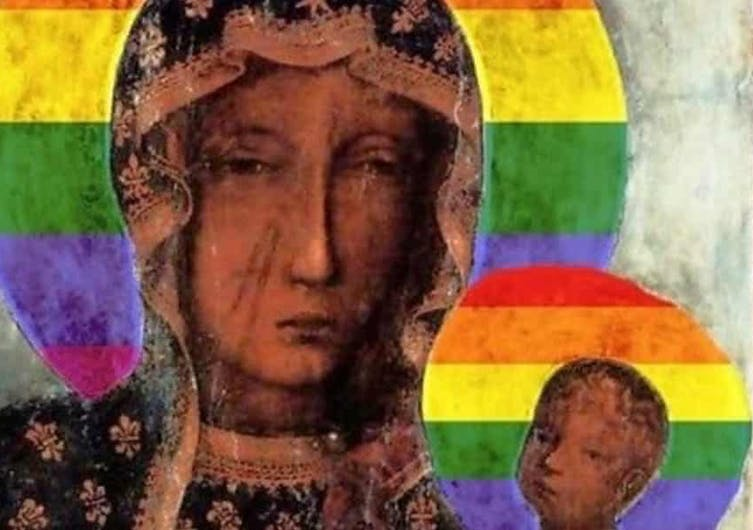
The LGBTQ community in Poland has been under increasing
attack in recent years as the country’s rightwing
government attempts to copy Russian methods of
demonizing LGBTQ people to hide their own failings.
“We are dealing with a direct attack on the family and
children inspired by the LBGTQ movement,” Jarosław
Kaczyński, leader of the ruling rightwing Law and
Justice party, told supporters. “They actually threaten
our identity, our nation, and the Polish state."
Queer Art: Painting a Park Bench
Dr. Cheryl Clarke: Poet and Activist
Kenney Mencher:
Genderqueer Artist
Atlanta Gay Men's Chorus: National Anthem
HRW: Arrest in Poland Over Virgin Mary's Rainbow Halo
Artist Arrested for Blasphemy for Painting Virgin May
with Rainbow Halo
Art, Religion, and LGBTQ Rights in Poland
Unbreakable LGBTQ Art Installation in Warsaw
Art Exhibition: Gay in Trumpland
LGBTQ Latinix Mural Defaced in San Francisco
Artists Speak Up: LGBTQ People Under Attack in Brazil
Brazilian LGBTQ Art Show
Shut Down
LGBTQ Performance
Art
Spoken Word, Storytellers, Slam Poets
--Andrea Gibson - Queer slam poet; Poet Laureate of
Colorado
--Greg Herren - Queer mystery writer; New Orleans
Storyteller
--Danez Smith - Queer, non-binary, HIV-positive poet
from Minnesota; Explores complex social issues such as
race, gender, sexuality
--Alok Vaid-Menon - Gender non-conforming writer,
performance artist, poet; Challenges traditional
narratives around gender identity
--Emanuel Xavier - Poet, author, LGBTQ activist; Draws
from his experiences with homelessness and violence
--Porsha Olayiwola - Black queer-dyke, hip-hop feminist
from Massachusetts; Poet Laureate of Boston; Artistic
Director of MassLeap; Slam poetry champion; Co-founder
of The House Slam
--Kit Yan - Trans Asian American poet, screenwriter,
lyricist; One-person slam show, "Queer Heartache"
--Denice Frohman - New York City-based poet, educator;
Explores race, gender, sexuality; Famous poem "Dear
Straight People"
--Tommy Pico - Brooklyn-based poet from Viejas Indian
reservation; Explores modern queer Indigenous
experiences
--Staceyann Chin - LGBTQ activist, spoken-word poet;
Powerful activism, candid storytelling
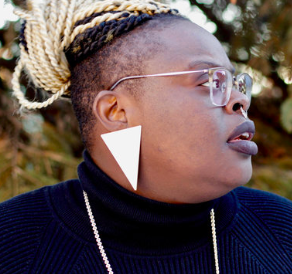
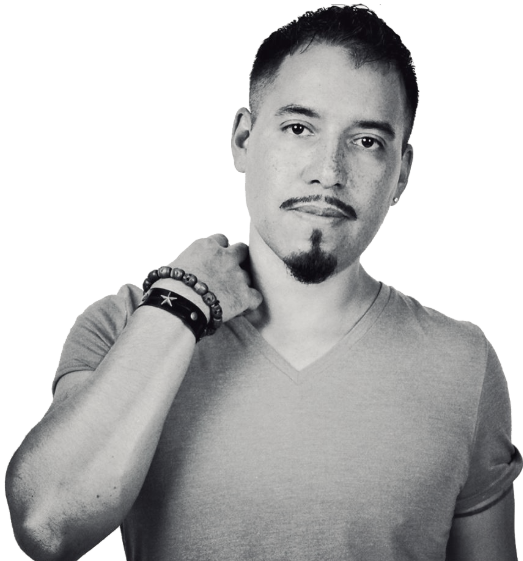
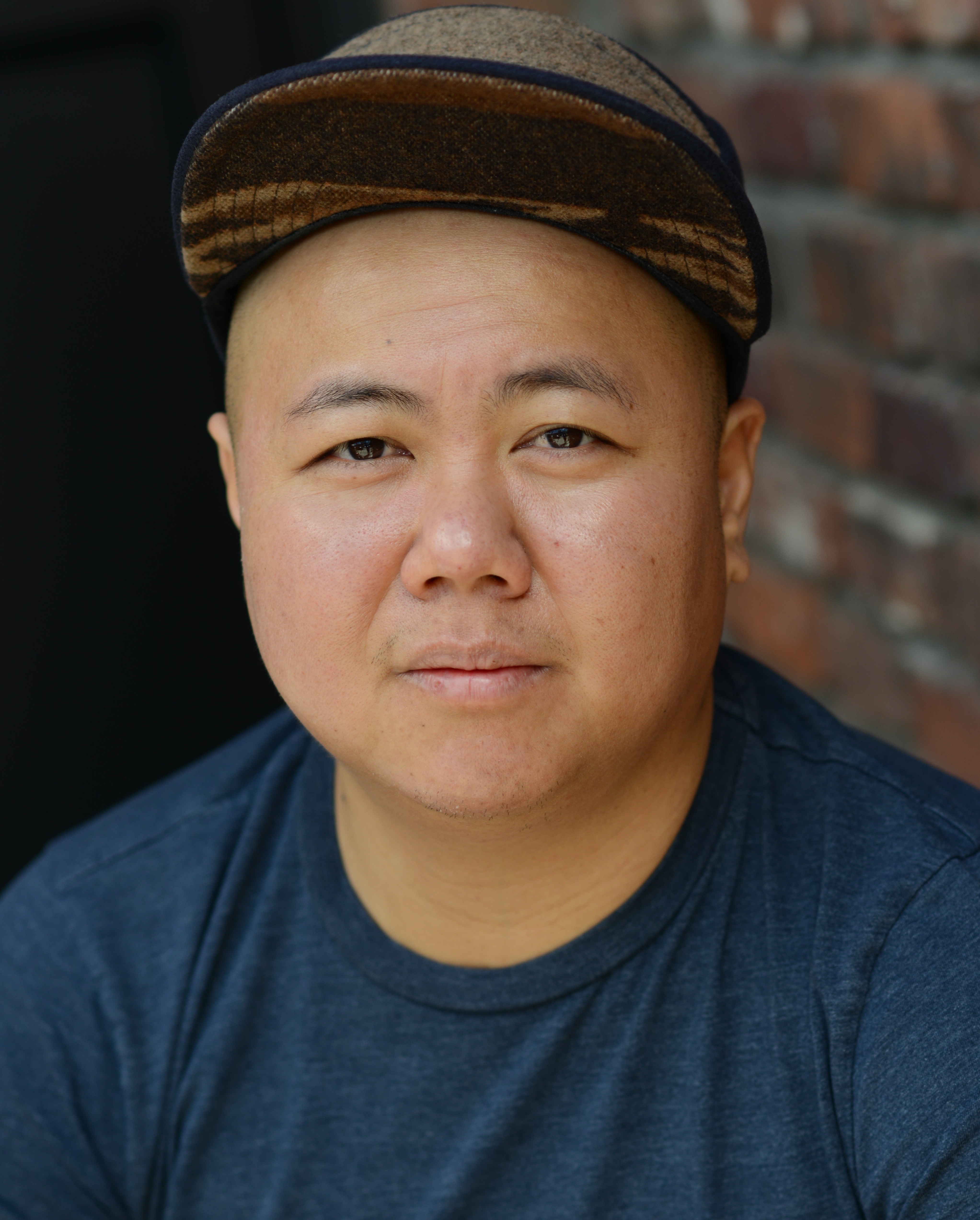
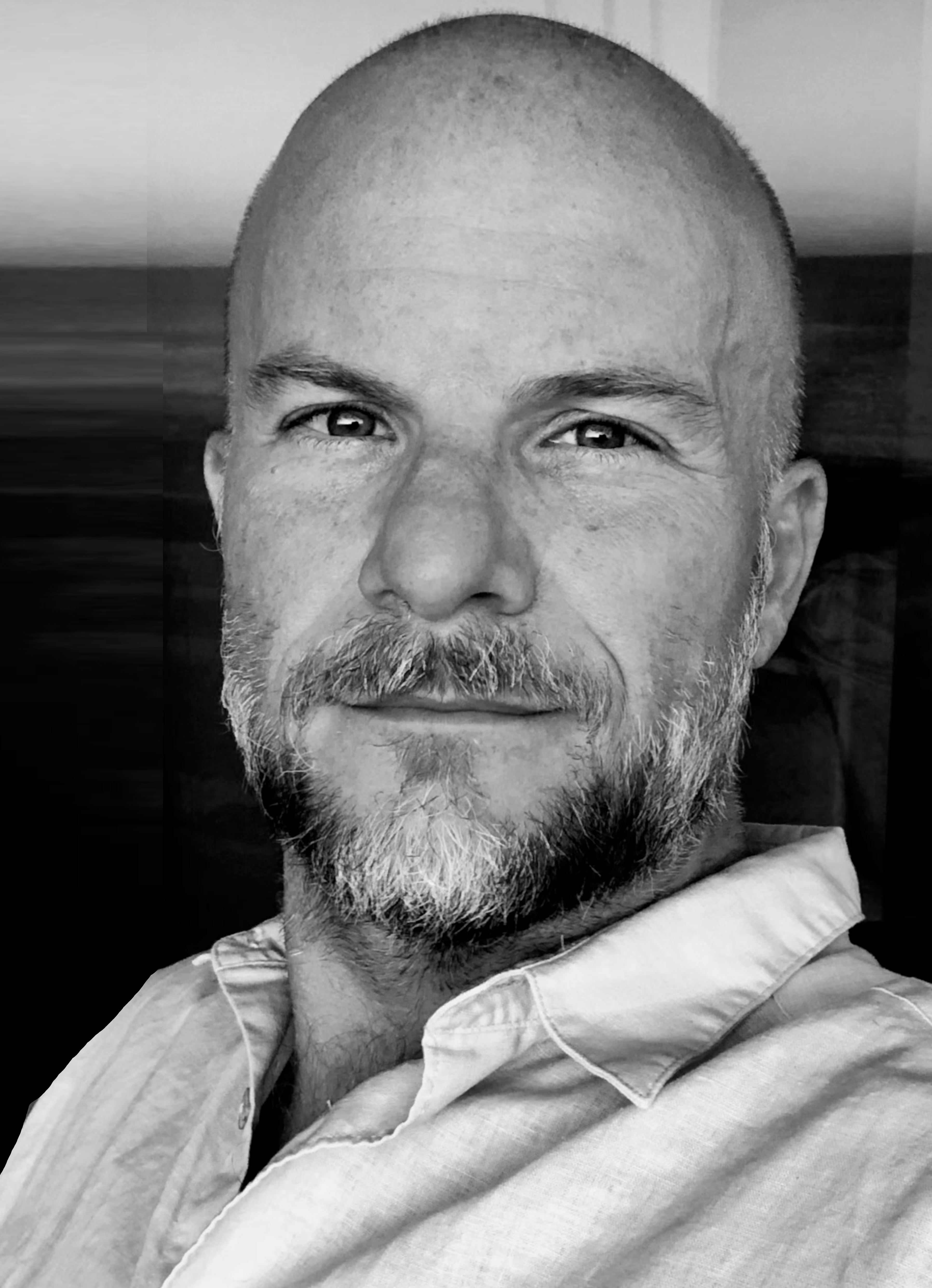
Organizations and Resources
--Button Poetry - Organization and YouTube channel
showcases a wide range of spoken word and slam poetry,
including many LGBTQ artists
--The Nuyorican Poets Café - Long history of supporting
marginalized voices, this New York City institution has
been a hub for queer poets for decades
--Queer Poetry Slams and Open Mics - Sparkle in
Washington DC; MassLeap, Boston Pulse, and CanTab Open
Mic in Boston
--LGBTQ Literary Anthologies - Collections like "Nepantla:
An Anthology Dedicated to Queer Poets of Color" bring
together established and emerging queer voices
Boston Exhibits Artwork by
LGBTQ Refugees
Comedian Moms Mabley in 1967
Pride Flag
Sewn From Over 3500 Diversity Messages
Tribute to Gay Classical
Musicians
Pride in Poetry: LGBTQ
Poets
Kenney Mencher: Painter at Work
Braden Summers: LA-Based Gay Photographer
Adds Fresh Color to LGBTQ Spectrum
3D Artists: Famous LGBTQ
Scupltors
Smooth and Wicked: The Art
of Mel Odum
History of the Queer Art
Movement
Gay American Composers
Queer Poets to Read Now and Forever
The Lesbian Photo Book That Changed
Everything
OutSpoken: LGBTQ Storytelling
Tig
Nataro Reads Poem: Tincture by Andrea Gibson




LGBTQ Art History:
Art, Sexuality, Culture
Art and sexuality have been synonymous with each other
almost as long as the existence of art itself. From
Praxiteles’ revolutionary Knidian Aphrodite to Erin M
Reily’s tapestries of sexts in 2013’s brazenly modern Nudes,
art has frequently been seen as the perfect platform to
convey feelings and desires that aren’t always expressible
in ordinary life.
With awareness of LGBTQ issues and rights over the past
century rapidly increasing, gay artists and their sexuality
have been brought to the forefront of contemporary culture.
Whilst liberating, being open about their sexuality also
runs the risk of being put into a box – gay artists can only
paint about sex or queerness, and their work can only be
analyzed and appreciated from that viewpoint. This can, and
has been, extremely damaging to queer creators.
As Andy Warhol stated when speaking about his work, ‘there’s
nothing behind it’. Not every element of his work has to be,
or indeed can be, picked apart, and sexuality is only one
contributing factor to his impressive oeuvre. However, it is
important to recognize the impact his and other gay artists’
work has had on the LGBTQ movement. Both he and David
Hockney were key figures in the sexual revolution of the
sixties and seventies, elevating them to the position of gay
icons. Think of Hockney’s iconic series ‘Love Painting’ and
the detailed drawings of copulating couples from Warhol’s
early career for reference of one side of their approach to
sexuality.




Keith Haring’s Life: TV Series by ‘Looking’ Director Andrew
Haigh
Steel City Men's Gay Chorus
Celebrating Drag in All its Glory: Artist Rachel Rampleman's
'Life is Drag' Exhibition
Slam Poetry: Dear Straight People
Andrea Gibson: Reading Her Poetry
Heather Shaw: Roasting Kim Davis
Nurse Blake On Comedy Tour, Viral Fame, LGBTQ Advocacy
First London Dyke Market in Summer 2024
There’s a Scarcity of Out Ballerinas: Queer
the Ballet is Trying to Change That
Queer Artists Whose Work is Making
Us Pay Attention
Hannah Gadsby: All Stars Supershow
List of Queer Poetry
Lion King: London Gay
Men's Chorus
Vaginal Davis’ Queer Punk Art Is More Relevant than Ever
Braden Summers: LA-Based Gay Photographer
Adds Fresh Color to LGBTQ Spectrum
Despite how central queerness was to their artistic
identities, these artists didn’t as much create ‘gay art’ as
they developed how sexuality was expressed through different
medias. It was instead the more implicitly sexualized of
their work that became notable. The overt and fluorescent
colors of Warhol’s pop art and campy subject choices scooped
from pop culture defined camp culture; Hockney’s bright
studies of hot summers in 1970’s LA run along a similar
vein.
Many women in the art world have utilized, or equally
omitted, sexuality in their work to make a statement about
the modern world
We mustn’t forget the impact queer female artists have also
had on culture, however. Although noticeably (and
erroneously) less known than their male counterparts, many
women in the art world have utilized, or equally omitted,
sexuality in their work to make a statement about the modern
world.
Diane Arbus is one great example. An American photographer,
excluded not only due to her gender but also because of her
bisexuality, her isolation from the wider community likely
influenced her interest in outsiders; gritty, monochrome
portraits of prostitutes, nudists and street urchins
populate her photography and suggest her own fearless
outlook on sexuality.
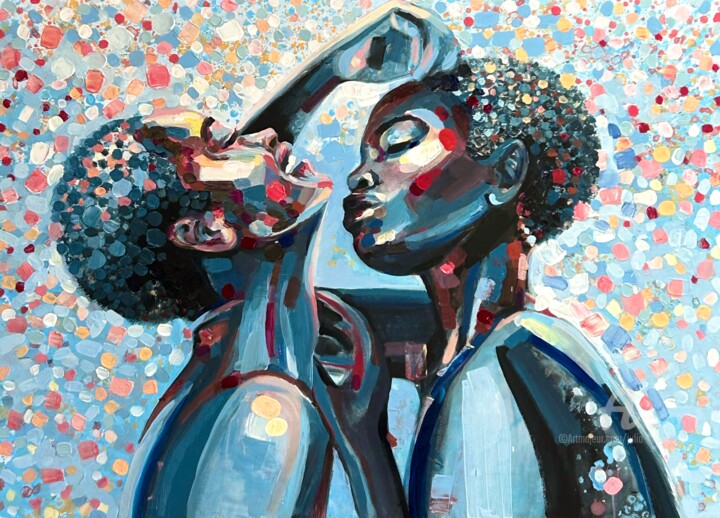
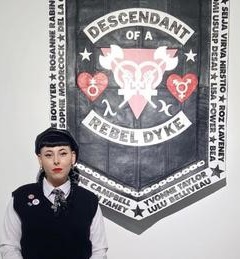

What is Queer Art?
Photographer Meg Allen: Butch
Photo Project
Poet Mary Oliver Dies at 83
Queer Poets to Read Now and Forever
Celebrating 100th Birthday of Tom
of Finland
Ballet 22: Challenging Gender Norms
Pride and Poetry
Gay Photographers: Vincent Keith and Oliver Zeuke
Poetry Slam: Dear Straight
People
Funny That Way:
Documentary About Trans Comic Julia Scotti
Fire Island Dance Festival
Advocate: Queer Composers Who Made
History
LGBTQ Writers Who Have Won the
Pulitzer Prize
Poetry Foundation: LGBTQ Pride
Poems
Romaine Brooks
could be considered the flipside of this. Rather than
portraying sexuality in all its brazen beauty as Arbus does,
she instead rebelled through androgyny and reticence.
Although she had many relationships with women throughout
her life, it was never a fact she wore on her sleeve, even
marrying her also closeted male friend for a short period.
Her work instead explores female sexuality not through the
male gaze, but in spite of it. Muted portraits of women in
heavy, enveloping gowns or suits and top-hats show how the
feminine body can be appreciated in many different forms – a
far cry from the provocative nudity of other contemporary
works like Manet’s Ophelia. Her art was incendiary in an
implicit way.
There is the danger that, if artists choose to be open about
their sexuality, they will always be marked with the same
brush
As a result of the wave of LGBTQ rights and acceptance over
recent decades, artists previously not considered to be gay
are now having their work looked at through a different
lens. A new opera has unveiled intriguing information about
Leonardo da Vinci’s relationship with his young assistants,
Metzi and Salaí, and the potentially sexual nature of their
close bond. Da Vinci lived at a time when sexual liberty,
especially for men, was culturally normalized, even if it
was decried by the Florentinian state. This revelation
provides a new perspective on his intensely detailed and
anatomical studies of the male form, shining a whole new
light on such works as the Vitruvian Man.



Pride Poems
Kenney Mencher:
Genderqueer Artist
Sculpture Unveiled in NYC
Honoring Trans and Nonbinary Communities
Opera: The Love That
Dare Not Speak Its Name
Without JEB’s Photography, The World
Wouldn’t Know Lesbian History
Essential Plays, Books, and Movies for
Understanding the History of Queer Liberation
The Lesbian Photo Book That Changed
Everything
Huff Post: 30 LGBTQ Artists You Should
Know
Ballet 22: Challenging Gender Norms
Bisexual Poets You Should Be Reading
Pieces from LGBTQ Artists at Superfine
Art Fair in New York
Mae Martin: Stand Up Comic
List of Queer Poetry
An artist’s reluctance in revealing their queerness can be
both the bain and the blessing of their professional lives;
while on one hand they have the freedom to paint, sculpt or
photograph as they wish, without receiving the reductive
‘provocative’, ‘liberal’ or ‘licentious’ labels that often
emerge when an individual is open about their sexuality,
they also have to suffer the anguish of repressing their
emotions in art.
There is the danger that, if artists choose to be open about
their sexuality, they will always be marked with the same
brush. That’s not to suggest that there is anything wrong
with being known as the ‘gay artist’ – many creators have
embraced how their work has been accepted by the LGBTQ
community. However, it does run the risk of making their art
appear one-dimensional, as if everything they produce has to
in some way be linked to their sexuality when in fact an
artist’s influences are far-ranging and delimited.

However, times are changing. Now it has become increasingly
important for queerness to be analyzed as one contributing
element or influence of an artist’s oeuvre, rather than
being the overriding feature that makes appreciating it
worth-while. It is perhaps the rebellion that their work
represents, in whatever form that takes, that is inspiring
to the queer community. As Warhol details in his 1980 book
POPISM, “one straight kid said to me, “It’s nice not to be
trapped into something, even if that’s what you are”. This
freedom is exactly what makes LGBTQ art so rousing – it
stands for people that have so long been repressed finally
receiving the liberty they have fought for.
[Source: Cerys Turner, February 2020]
Dr. Cheryl Clarke: Poet and Activist
LGBTQ Art Shows That are Spicing Up Global Museums
Joan E. Biren: Portraits
of Lesbians
Pride Poem: The Root of All
Barry Humphries, Known for His Drag Persona Dame Edna
Everage, Dead at 89
Smooth and Wicked: The Art
of Mel Odum
Why Aren't There More Famous Gay Comedians?
3D Artists: Famous LGBTQ
Scupltors
Elska
Magazine: Photo Spread of Gorgeous
Global Men
Voguing with Kia LaBeija: Drafted
Info: LGBTQ Music and Songs
Photographer Ron Amato:
Wet Gay Nudes
LGBTQ Designers: Jonathan Adler
and Simon Doonan
Lion King: London Gay
Men's Chorus
Character: Fancy Gay Art Magazine
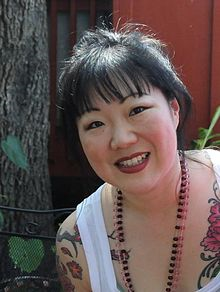



LGBTQ Comedians
Laughter as a tool for inclusion and understanding
LGBTQ comedians have played a vital role in shaping both
the landscape of comedy and the broader cultural
conversation around identity, acceptance, and
resilience. Through humor, they challenge stereotypes,
confront prejudice, and offer unique perspectives that
broaden the scope of mainstream entertainment.
From trailblazers like Ellen DeGeneres, who became one
of the first openly gay comedians to achieve national
fame, to contemporary stars like Hannah Gadsby and Bowen
Yang, LGBTQ performers have used comedy not just to
entertain but to inform and empower. Gadsby’s critically
acclaimed special Nanette broke conventional stand-up
norms by blending personal trauma, art history, and
social critique—demonstrating how comedy can be both
cathartic and political.
Comedy provides LGBTQ individuals a platform to reclaim
narratives often distorted or ignored. Figures like
Wanda Sykes, Tig Notaro, Joel Kim Booster, and Matteo
Lane bring authenticity to their acts, reflecting a
diversity of LGBTQ experiences across race, gender, and
cultural background. Their work challenges the notion
that queerness is a niche perspective, instead
highlighting its universality.
LGBTQ comedians continue to reshape the comedy world,
using laughter as a tool for inclusion and
understanding. In doing so, they not only entertain but
also inspire a broader appreciation for the complexity
and richness of human identity.
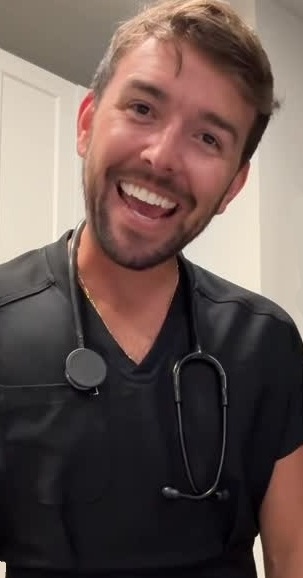
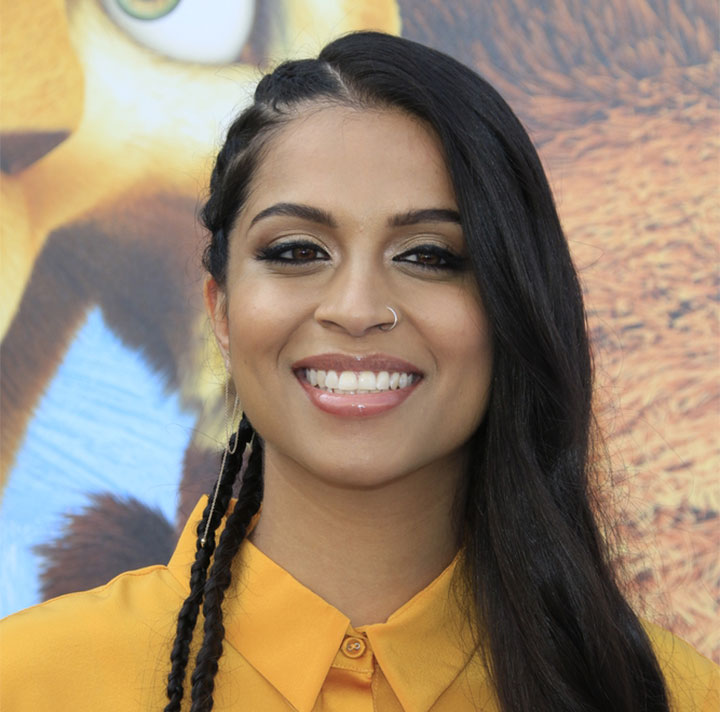



Andrea Gibson: Reading Her Poetry
Heather Shaw: Roasting Kim Davis
Nurse Blake Is Healing the Gays, One Punchline at a Time
New Netflix Documentary Is Telling the History of Queer
Stand-Up Comedy
Tig Notaro Realizes She is a Role Model
for Queer Women
Comedian Zoe Lyons on the Exciting Rise
of Queer and Trans Comedy
Gay Comedians in Their Youth
Hannah Gadsby’s Netflix Special ‘Gender
Agenda’ Sets Lineup of Genderqueer Comedians
Meet Comedian Nurse Blake
Kristin Key: Between a Redneck in
Portland
Barry Humphries, Known for His Drag Persona Dame Edna
Everage, Dead at 89
Standup Comedian Mae Martin Calls Out
Dave Chappelle
Info:
LGBTQ Jokes and Humor
|
Ellen
DeGeneres
Ross Matthews
Tig Notaro
Hannah Gadsby
Suzanne Westenhofer
DeAnne Smith
Margaret Cho
Dana Goldberg
Mario Cantone
Simon Amstell
Paula Pell
Paris Sashay
Moms
Mabley
Sophie
Santos
Cassie
Workman
Sam
Morrison
Dame
Edna Everage
Darcy
& Jer
Nurse
Blake
Pete
Angelo
Dylan
Adler
Sam Jay
Caleb Hearon
Jes Tom
Urzila
Carlson
 |
Randy
Rainbow
Mae
Martin
Kate
McKinnon
Lea DeLaria
Eddie Izzard
Sandra Bernhard
Kate Clinton
Wanda Sykes
Gabe Liedman
Sabrina Jalees
Franqi French
Maggie Casella
Alec Mapa
Kelli Dunham
Julia
Scotti
Jerrod
Carmichael
Maggie
Faris
Kristin Key
Tim
Murray
Sarah
Keyworth
Stephanie Miller
Roz
Hernandez
EJ Marcus
Zoe
Lyons
Adam
Sank
 |
Mo'Nique
Meg Stalter
Larry Grayson
Sampson McCormick
Lilly Singh
Eliot Glazer
Erin Foley
James Adomian
Fortune Feimster
KeLanna Spiller
Stephen Guarino
Joel Creasey
Blake
Lynch (Nurse Blake)
Joe Lycett
Heather Shaw
Matteo Lane
Kelsey
Darraugh
Benito
Skinner
Sydnee
Washington
Mandy
Jane
Jess
Tom
Taylor
Tomlinson
Marty
Gleeson
Hannah
Einbinder
Aaron Goldenberg & Jake Jonez
 |
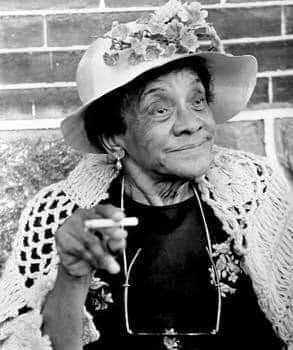
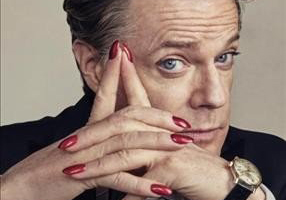


Heather Shaw: Roasting Kim Davis
Wendy Carlos: Switched On
Bach
Kenney Mencher: Painter at Work
Tig Nataro Reads Poem: Tincture by Andrea Gibson
LGBTQ Art Shows That
are Spicing Up Global Museums
Young LGBTQ
Contemporary Artists
Nurse Blake On Comedy Tour, Viral Fame, LGBTQ Advocacy
Darcy & Jer Share Their Love Story, Talk TikTok Fame &
Comedy Tour
Poetry Foundation: LGBTQ Pride
Poems
LGBTQ Art Shows: Now Showing at Museums
From Boston to Berlin
Meet the Young Artists of Provincetown
Voguing with Kia LaBeija: Drafted
Slam Poetry: Dear Straight People

Daniel Coffman
Bathroom Mirror Concert: Gloria
Bathroom Mirror Concert: It's Raining Men
Bathroom Mirror Concert: Gaston
Bathroom Mirror Concert: Proud Mary
Bathroom Mirror Concert: Ice Ice Baby
Bathroom Mirror Concert: If You Wanna Be
My Lover
Queer Power Couples
in Arts Administration
Same-sex couples have made significant contributions as
directors, leaders, and benefactors of fine arts
organizations, particularly within LGBTQ-focused
institutions and increasingly in mainstream
organizations. Many have combined their personal and
professional lives to build, fund, and advocate for
LGBTQ artists and visibility within the art world.
--Mitchell Greco/Brandon Weinbrenner (Houston) - Theatre
Under the Stars and the Alley Theatre
--Charles Leslie and Fritz Lohman (New York City)
-Leslie-Lohman Museum of Art
--Evan Garza/Chris Bogia (New York City) - Fire Island
Artist Residency
--Roxane Gay/Debbie Millman (USA) - Art Collections in
New York and Los Angeles
--Bernard Lumpkin/Carmine Boccuzzi (New Haven) - Young
Black Gifted Art Collection and Mickalene Thomas
Scholarship at Yale School of Arts
--Bee Knight/Melissa Hamilton (Philadelphia) - Leeway
Foundation
--Aaron Fleischman/Dr Lin Lougheed (Chicago) - Art
Institute of Chicago
--David Clifton-Strawn/Billy Clifton-Strawn (Atlanta) -
Atlanta Photography Group
--Jeff Pierson/Frank Hrabe (Birmingham) - Bluff Park
Arts and Crafts Festival

Queer Poetry
Dreams by Langston Hughes
Hold fast to dreams, for if dreams die
Life is a broken-winged bird that cannot fly.
Hold fast to dreams, for when dreams go
Life is a barren field frozen with snow.
A Book by Emily Dickinson
There is no frigate like a book to take us lands away,
Nor any coursers like a page of prancing poetry.
This traverse may the poorest take without oppress of
toll;
How frugal is the chariot that bears a human soul!
I
Sing the Body Electric by Walt Whitman
I sing the body electric,
The armies of those I love engirth me and I engirth
them,
They will not let me off till I go with them, respond to
them,
And discorrupt them, and charge them full with the
charge of the soul.
Was it doubted that those who corrupt their own bodies
conceal themselves?
And if those who defile the living are as bad as they
who defile the dead?
And if the body does not do fully as much as the soul?
And if the body were not the soul, what is the soul?



Pride Poem: The Root of All
There’s a Scarcity of Out Ballerinas:
Queer the Ballet is Trying to Change That
The Lesbian Photo Book That Changed
Everything
Queer Arts: List of LGBTQ Artists
Pride and Poetry
Wikipedia: List of LGBTQ Dancers
Tig Nataro Reads Poem: Tincture by Andrea Gibson
Bisexual Poets You Should Be Reading
OutSpoken: LGBTQ Storytelling
Pride Poems
What is Queer Art?
Steel City Men's Gay Chorus
Steven Menendez: Photos Celebrating the
Earth and the Male Form
Gay Photographer: Terry Hastings
Origin of Love: Hedwig and the
Angry Inch
This Man's Illustrations About Life With
His Boyfriend Are Absolutely Adorable
Info: LGBTQ Television
and Media
LGBTQ Short Stories
The Dream Keeper by Langston Hughes
Bring me all of your dreams, you dreamer,
Bring me all your heart melodies
That I may wrap them in a blue cloud-cloth
Away from the too-rough fingers of the world.
Footnote to Howl by Allen Ginsberg
The world is holy! The soul is holy! The skin is holy!
The nose is holy! The tongue and cock and hand and
asshole holy!
The bum’s as holy as the seraphim! the madman is holy as
you my soul are holy!
Holy the groaning saxophone! Holy the bop apocalypse!
Holy the jazzbands marijuana hipsters peace peyote pipes
and drums!
Holy the solitudes of skyscrapers and pavements! Holy
the cafeterias filled with the millions!
Holy the
mysterious rivers of tears under the streets! Holy the
lone juggernaut!
Holy the
vast lamb of the middleclass! Holy the crazy shepherds
of rebellion!




Pride Poem: The Root of All
The Lesbian Photo Book That Changed
Everything
Alvin Ailey American Dance
Theatre: Full Performance
Photographer Ron Amato: Wet
Gay Nudes
Tig Notaro Realizes She is a Role Model for
Queer Women
LA
Gay Men's Chorus: Love On Top
The Prom Broadway Show: You
Happened
Pride Poems
These Artworks Captured the Aftermath of Stonewall
Kehinde Wiley: Painter of President Obama Official
Portrait
Advocate: Queer Composers Who Made
History
Comedian Zoe Lyons on the Exciting Rise
of Queer and Trans Comedy
Gay Comedians in Their Youth
Pride and Poetry
A
Litany for Survival by Audre Lorde
And when the sun rises we are afraid it might not remain
when the sun sets we are afraid it might not rise in the
morning
when our stomachs are full we are afraid of indigestion
when our stomachs are empty we are afraid we may never
eat again
when we are loved we are afraid love will vanish
when we are alone we are afraid love will never return
and when we speak we are afraid our words will not be
heard nor welcomed
but when we are silent we are still afraid
So it is better to speak, remembering we were never
meant to survive.
My People by Langston Hughes
The night is beautiful, so the faces of my people.
The stars are beautiful, so the eyes of my people.
Beautiful, also, is the sun.
Beautiful, also, are the souls of my people.

Dr. Cheryl Clarke: Poet and Activist
First London Dyke Market in Summer 2024
These Artworks Captured the Aftermath of Stonewall
Feed The Id: Live On The Lake with Cory
Wong and Dave Koz
Diverse Humanity: LGBTQ-Themed Photo Book
Series
30 Different Pride Flags
on Display
Ursula K. LeGuin: On Being a
Writer and a Man
Pride and Poetry
Braden Summers: LA-Based Gay Photographer
Adds Fresh Color to LGBTQ Spectrum
These Artworks Captured the Aftermath of Stonewall
Pride Flag
Sewn From Over 3500 Diversity Messages
We Have Not Long to Love by Tennessee Williams
We have not long for love. Light does not stay.
The tender
things are those we fold away.
Coarse
fabrics are the ones for common wear.
In silence
I have watched you comb your hair.
Intimate
the silence, dim and warm.
I could,
but did not, reach to touch your arm.
I could,
but did not, break that which is still.
Almost the
faintest whisper would be shrill.
So moments
pass as though they wished to stay.
We have
not long to love. A night. A day.

Pride Poem: The Root of All
Meet the Cast: Eddie Izzard in Charles Dickens’ Great
Expectations
Diverse Humanity: LGBTQ-Themed Photo Book
Series
Comedian Moms Mabley in 1967
Walt Whitman: America's
Poet as Queer Pioneer
Gay Photographer: Steven Menendez
Queer Poets to Read Now and Forever
Art History Teaching Resources: Queer Art 1960s to
Present
Hallelujah: Queer Dance About
Love, Hate, and Religion
Slam Poetry: Queer Marriage Poem
History of the Queer Art
Movement
Feed The Id: Live On The Lake with Cory
Wong and Dave Koz
What is Queer Art?
Pride Poems
Emerging Queer
Culture
Spring 2020 ushered in a variety of new talent in the
LGBTQ arts and entertainment community
She Sings
Too - Based on Chelsea Clinton’s (and illustrator
Alexandra Boiger’s) bestselling children’s book, She
Persisted: The Musical, follows fourth-grader Naomi
on a field trip to a women’s history museum that turns
into an adventurous and inspiring voyage through time.
“With so many kids’ shows based on fairy tales,” said
one Broadway insider, “it’s a treat to have one inspired
by feminist tales.”
Queering the Classics - New mobile-based media
innovators Quibi has given the green light on a
modern-day queer romantic comedy inspired by Jane
Austen’s Pride and Prejudice, written by rising
Asian-American comedy star Joel Kim Booster (NBC’s
Sunnyside). Trip follows two besties embarking on a
wine-filled week on Fire Island during the summer.
We Like Pike - Austin-based duo Patrice Pike and Wayne
Sutton (cofounders of formative ‘90s band Sister 7) have
released their debut album, Heart Is A Compass,
as their newest musical incarnation, Pike & Sutton.
Pike, who Rolling Stone called “Tina Turner, Bessie
Smith, Janis Jopin, and Robert Plant all rolled up into
a tiny but explore package,” has been a longtime visible
LGBTQ activist, participating in everything from
Stonewall marches to ACT UP protests.


 
Keith Haring’s Life: TV Series by ‘Looking’ Director
Andrew Haigh
Slam Poetry: Dear Straight People
Queer Culture: Spring 2020
Advocate: Emerging Queer Artists
Queer Artists Whose Work is Making
Us Pay Attention
Gay Photographer: Terry Hastings
OutSpoken: LGBTQ Storytelling
This Photographer Left Her Husband for a Woman and
Documented It in Portraits
Without JEB’s Photography, The World
Wouldn’t Know Lesbian History
LGBTQ Art Shows That are Spicing Up Global Museums
Funny That Way:
Documentary About Trans Comic Julia Scotti
Walt Whitman: America's
Poet as Queer Pioneer
Heather Shaw: Roasting Kim Davis
Healing Power - Transmasculine Latinx pop artist Jakk
Fynn’s EP, Cancelled, features his latest single,
“Heal,” an emotional track telling the story of how he
rebuilt himself from scratch at the end of an
emotionally draining relationship. “Not being true to
yourself in a relationship can feel like suffocation,
like death,” he said of the song. “‘Heal’ is a chance to
do just that by embracing the vulnerabilities that make
me who I am.”
Something Witchy - Freeform’s Motherland tells
the story of an alternate America where witches ended
their persecution over 300 years ago by cutting a deal
with the government. The parallels are uncanny.
Thank God for Saint Frances - Saint Frances stars
Kelly O’Sullivan as Bridget, the nanny of Frances, the
6-year-old daughter of a same-sex couple. O’Sullivan was
inspired to pen the script from her own experiences as a
caregiver who decided to end an unwanted pregnancy. With
humanity and comedy, she fights stigmas surrounding
abortion, post-partum depression, and rainbow families.
Not so GLAAD - GLAAD announced the cancellation of its
31st Annual Media Awards in NYC, joining the growing list
of LGBTQ events nixed over concerns of the COVID-19
outbreak. The ceremony was set to be hosted by bisexual
comedian Lilly Singh and had planned on honoring Ryan
Murphy, Judith Light, Janet Mock, and Taylor Swift,
among others. GLAAD stated it was working to ensure that
honorees’ “game-changing work is rightfully recognized
at another time.”

 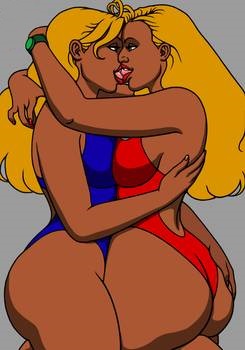 
There’s a Scarcity of Out Ballerinas:
Queer the Ballet is Trying to Change That
Queer Culture: Spring 2020
Advocate: Emerging Queer Artists
Queer Artists Whose Work is Making
Us Pay Attention
Stevie Sings “Maybe This Time” - Schitt’s
Creek
Braden Summers: LA-Based Gay Photographer
Adds Fresh Color to LGBTQ Spectrum
Gay Photographer: Steven Menendez
Gay American Composers
John
Holiday: Black Gay Opera Singer
LGBTQ Anime
Gay Comedian Joe Lycett: Live at the Apollo
Essential Plays, Books, and Movies for
Understanding the History of Queer Liberation
Ballet 22: Challenging Gender Norms
Fire Island Dance Festival
Poetry Slam: Dear Straight People
This Man's Illustrations About Life With
His Boyfriend Are Absolutely Adorable
Pride Flag
Sewn From Over 3500 Diversity Messages
Io Tillett Wright: Fifty Shades of Gay
Artist iO Tillett Wright has photographed 2,000 people
who consider themselves somewhere on the LBGTQ spectrum
and asked many of them: Can you assign a percentage to
how gay or straight you are? Most people, it turns out,
consider themselves to exist in the gray areas of
sexuality, not 100% gay or straight. Which presents a
real problem when it comes to discrimination: Where do
you draw the line?

Fifty Shades of Gay: iO Tillett
Wright's TED Talk
iO
Tillett Wright's Bio Notes
Gallery of iO Tillett Wright's
Photography
As a child actor, iO Tillett Wright turned her shoes
around in the bathroom stall so that people would think
she was a boy. As a teenager, she fell in love with both
women and men. Her life in the grey areas of gender and
sexuality deeply inform her work as an artist.
iO Tillett Wright is an artist whose work focuses on the
leading margins of contemporary life and culture. Her
photography is regularly featured on two blogs at the
New York Times: Notes from the Underground and
The Lowdown. iO created the Self Evident Truths project, an
ongoing document of LGBTQ America, which she continues
to work on. She had her first solo show at Fuse gallery
in New York City in 2010, and exhibited her latest work
at The Hole Gallery in early summer of 2012. She has
published three limited edition books of photographs;
Lose My Number, KISSER, and Look Ma No Hands. iO
has directed several music videos, and worked as a
professional film actor for nineteen years, in addition
to founding the world’s first nationally distributed
street art magazine.
Dr. Cheryl Clarke: Poet and Activist
Before Night: Short Film Tells
Queer Stories in New and Authentic Ways
Love is Lifting: LGBTQ Couples in Trick Photo Series
Poetry Foundation: LGBTQ Pride
Poems
Queer Arts: LGBTQ Photography
LGBTQ Writers Who Have Won the
Pulitzer Prize
Lion King: London Gay
Men's Chorus
Comedian Moms Mabley in 1967
Autostraddle: Lesbian
Photographers You Should Know About
LGBTQ Theatre Makers to
Pay Attention to Right Now
UK Comedian Joe Lycett:
Living in Birmingham
Ballet 22: Challenging Gender Norms
Smooth and Wicked: The Art
of Mel Odum
Brief History of LGBTQ Art
and Symbolism
Info: Queer Fashion Design



Summary of
Queer Art
Any art that can be considered "queer" refers to the
re-appropriation of the term in the 1980s, when it was
snatched back from the homophobes and oppressors to
become a powerful political and celebratory term to
describe the experience of gay, lesbian, bisexual,
transgender, and intersex people. Adhering to no
particular style, for over more than a century, Queer
Art has used photography, portraiture, abstract
painting, sculpture, and collage to explore the
varieties and depths of queer identity.
While homosexuality has a long history, the modern sense
of the term is relatively new. Since the late 19th
century, cultural and legal responses to homosexuality
have evolved, but it was only in the second half of the
20th century that many of the laws criminalizing
homosexual acts were overturned. It wasn't until the
late 20th century that homosexuality was no longer
considered a pathology by psychiatrists, and it wasn't
until the 21st century that marriage rights were granted
to same-sex couples. Throughout all of these
circumstances, Queer Art has addressed these issues
covertly and overtly, insisting on a voice in the art
world that routinely suppressed it.
Because of the early criminalization of homosexual acts
and the social stigma connected to homosexuality, much
Queer Art employs coded visual language that would not
arouse suspicion among the general public but would
allow those familiar with the tropes of the subculture
to glean the hidden meaning.
With the rise of activism in the wake of the Civil
Rights protests and the AIDS epidemic, Queer Art became
more frank and political in its subject matter, forcing
the viewers to recognize queer culture and to underscore
the institutional inequities and hypocrisy that fueled
homophobia.
The Identity Politics surrounding Queer Art has sparked
much debate, with some artists embracing Identity
Politics and other eschewing it as not important for
their work. The shifting nature of identities in
particular and changing contexts has induced much
questioning in queer communities and produced a myriad
of answers.
Keith Haring’s Life: TV Series by ‘Looking’ Director
Andrew Haigh
LGBTQ Poets Who Inspire
Tig Notaro Realizes She is a Role Model
for Queer Women
Diverse Humanity: LGBTQ-Themed Photo Book
Series
LGBTQ Art Shows: Now Showing at Museums From Boston to
Berlin
Comedian Zoe Lyons on the Exciting Rise
of Queer and Trans Comedy
Gay Comedians in Their Youth
Billy Strayhorn Introduced
by Duke Elligton
Poetry Foundation: LGBTQ Pride
Poems
Lion King: London Gay
Men's Chorus
Steven Menendez: Photos Celebrating the
Earth and the Male Form
Elska Magazine: Photo
Spread of Gorgeous Global Men
NYC Gay Men's Chorus: All I Want for Christmas
Slam Poetry: Dear Straight People




"I feel ever so strongly that an artist must be
nourished by his passions and his despairs. These things
alter an artist whether for the good or the better or
the worse."
-Francis Bacon
"There's a certain kind of equality I'm trying to
create, which is what I believe American democracy is
about."
-Catherine Opie
"Gay men today want to be ordinary. They want to fit in.
Well, I didn't care about that. I didn't care about
fitting in."
-David Hockney
"Works of art sometimes help us feel less out of place
in the world. Alongside queer novels, films, poems and
songs, art has played its part in nurturing the
self-awareness and confidence of queer people around the
world."
-Alex Pilcher
Standup Comedian Mae Martin Calls Out
Dave Chappelle
Pride Flag
Sewn From Over 3500 Diversity Messages
Joan E. Biren: Portraits
of Lesbians
Sculpture Unveiled in NYC
Honoring Trans and Nonbinary Communities
Queer Artists
Whose Work is Making Us Pay Attention
Poetry Slam: God is Gay
Celebrating 100th Birthday of Tom
of Finland
Joe Lycett: Sunday Night at the Palladium
Photographer Ron Amato:
Wet Gay Nudes
LGBTQ Art Shows: Now Showing at Museums From Boston to
Berlin
These Men and Their Glitter Beards
Sinners and Saints:
Photography of Michael Stokes
Interview with Comedian Hannah
Gadsby
Poetry Slam: Dear Straight
People
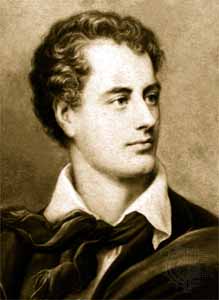
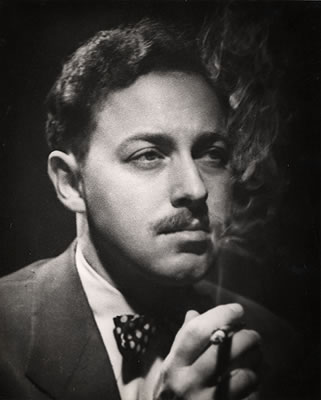
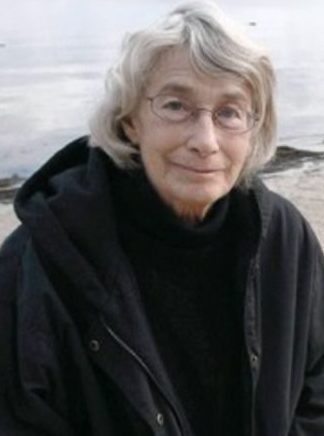
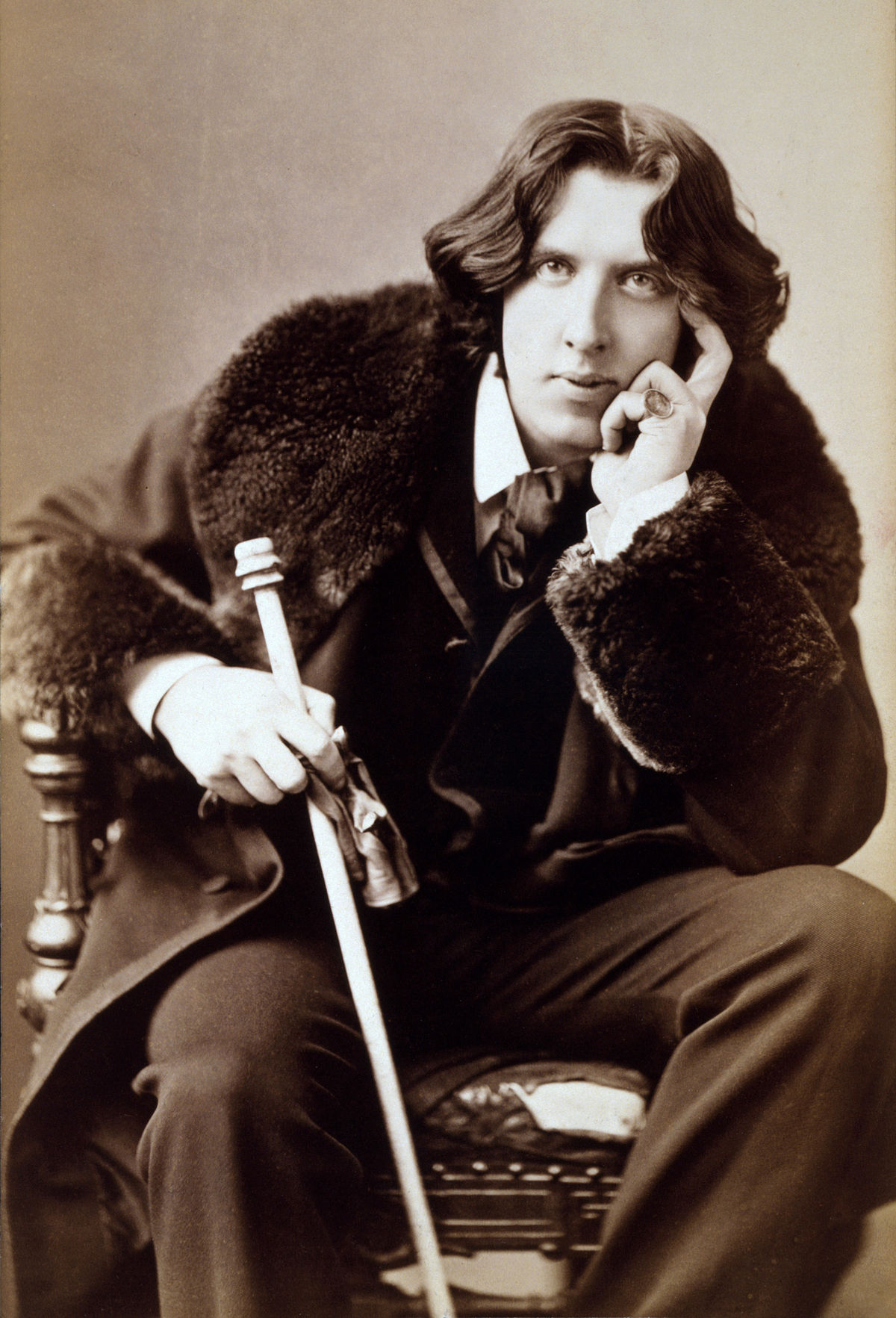
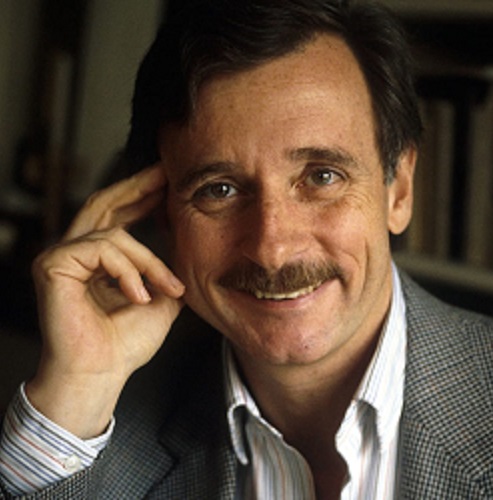
LGBTQ Authors,
Poets, and Playwrights
Francis Bacon - English Statesman, Author
TE Lawrence - English Soldier, Author
Lord Byron - English Poet
Walt Whitman - US Poet, Author
Oscar Wilde - Irish Author
Marcel Proust - French Author
Gertrude Stein - US Poet, Author
Alice B. Toklas - US Author
Percy
Bysshe Shelley - English Poet
James Baldwin - US Author
Susan
Sontag - US Author
Herman Melville - US Author
Jack
Kerouac - US Author
Federico
Garcia Lorca - Spanish Poet
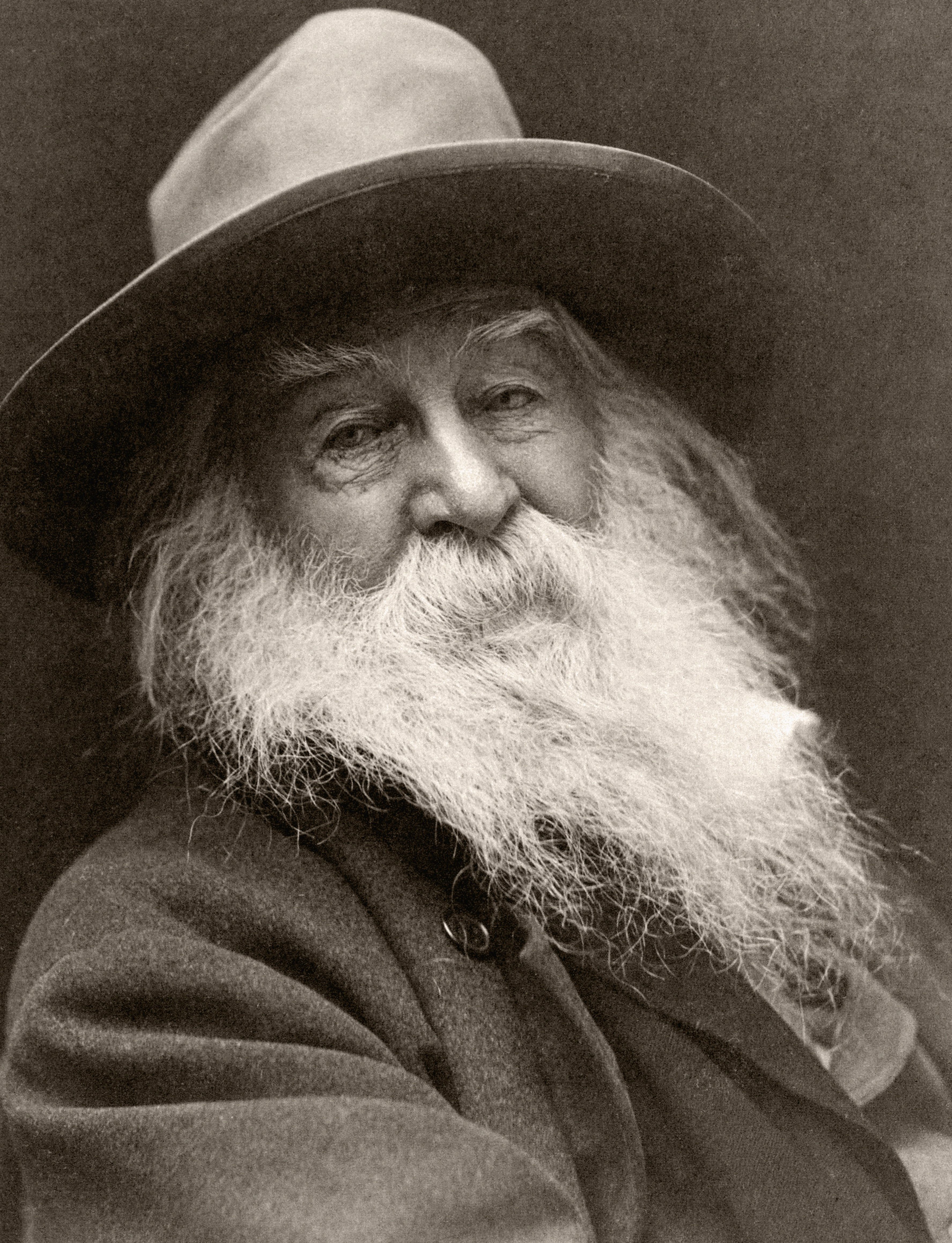
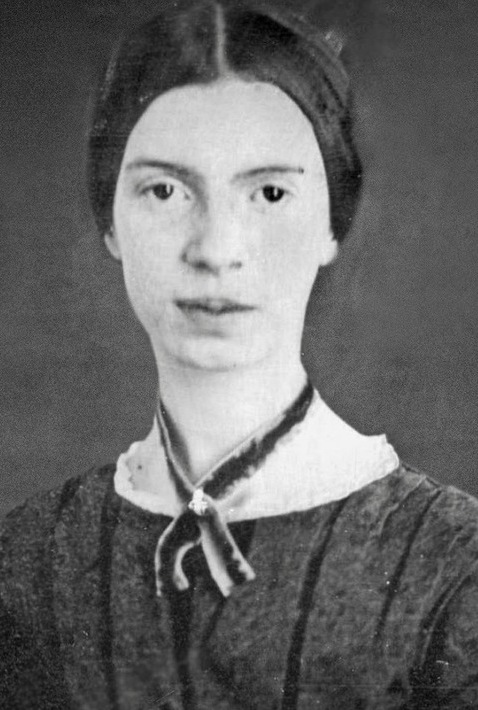
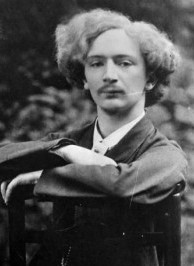


Pride Poems
Andrea Gibson, Poet Laureate of Colorado,
Dies at 49
Isaac Julien: Behind the
Scenes at MoMA
Lesbian
Photographers You Should Know About
Gay Comedian Joe Lycett: Live at the Apollo
I
Am What I Am: Song From La Cage Aux Folles
Only Us: Laura Dreyfus and
Ben Platt
Gay Photographer: Steven Menendez
Bisexual Poets You Should Be Reading
Comedian Zoe Lyons on the Exciting Rise of Queer
and Trans Comedy
Gay
Comedians in Their Youth
GQ Magazine:
Keith Haring Blew Up the Art and Fashion World
Essential Plays, Books, and Movies for
Understanding the History of Queer Liberation
Pieces from LGBTQ Artists at Superfine
Art Fair in New York
Kristin Key: Between a Redneck in
Portland
Pride Poem: The Root of All
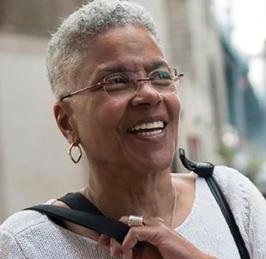
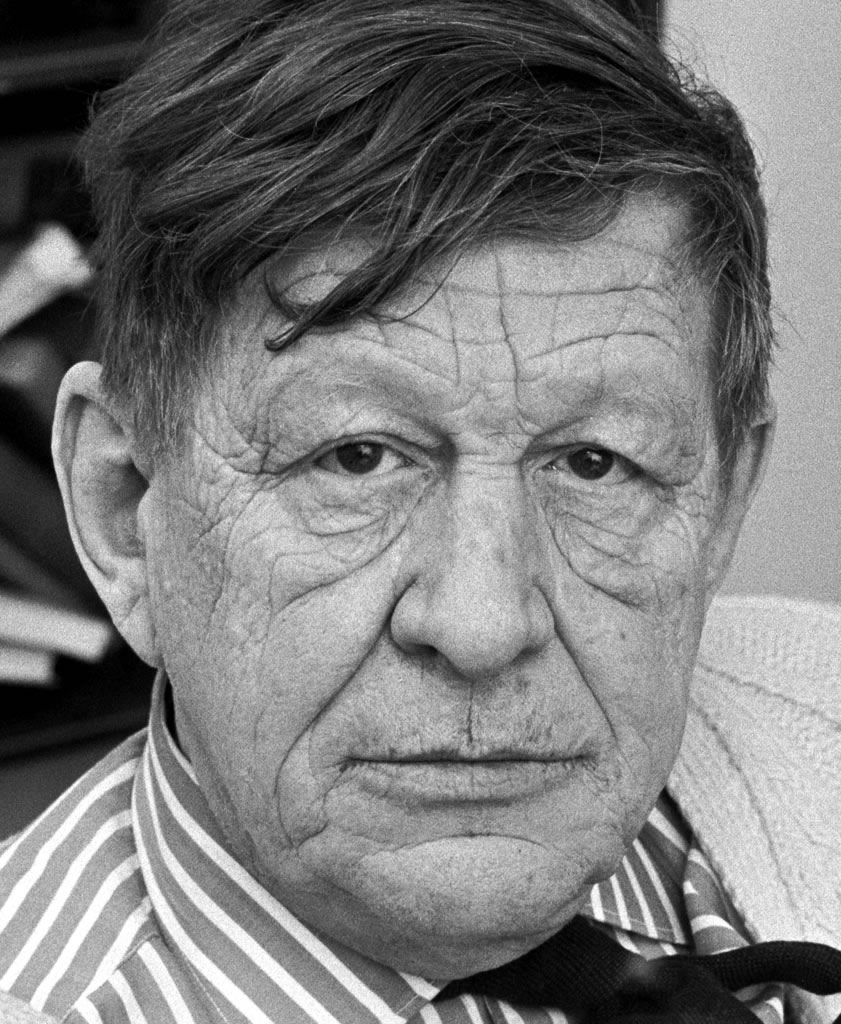
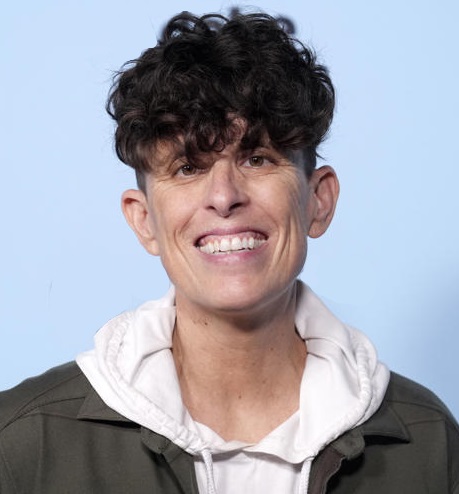


Mary
Oliver - American Poet
Richard
Blanco - American Poet
James
Merrill - American poet
Thomas
Love Peacock - English Poet
Willa Cather - US Author
Langston Hughes - US Author
Christina
Rossetti - English Poet
EM Forster - English Author
Hans Christian Andersen - Danish Author
Alice
Walker - US Author
Ralph Waldo Emerson - US Author
Virginia Woolf - English Author
Tennessee Williams - US Playwright
Rainer Maria Rilke - German Poet
Edward Albee - US Playwright
Lord
Alfred Douglas - English Poet
Armistead Maupin - US Writer
Adrienne
Rich - US Poet
Carol Ann
Duffy - Scottish Poet, playwright
Sidonie-Gabrielle
Colette - French Author
Edmund
White - US Novelist, Memoirist
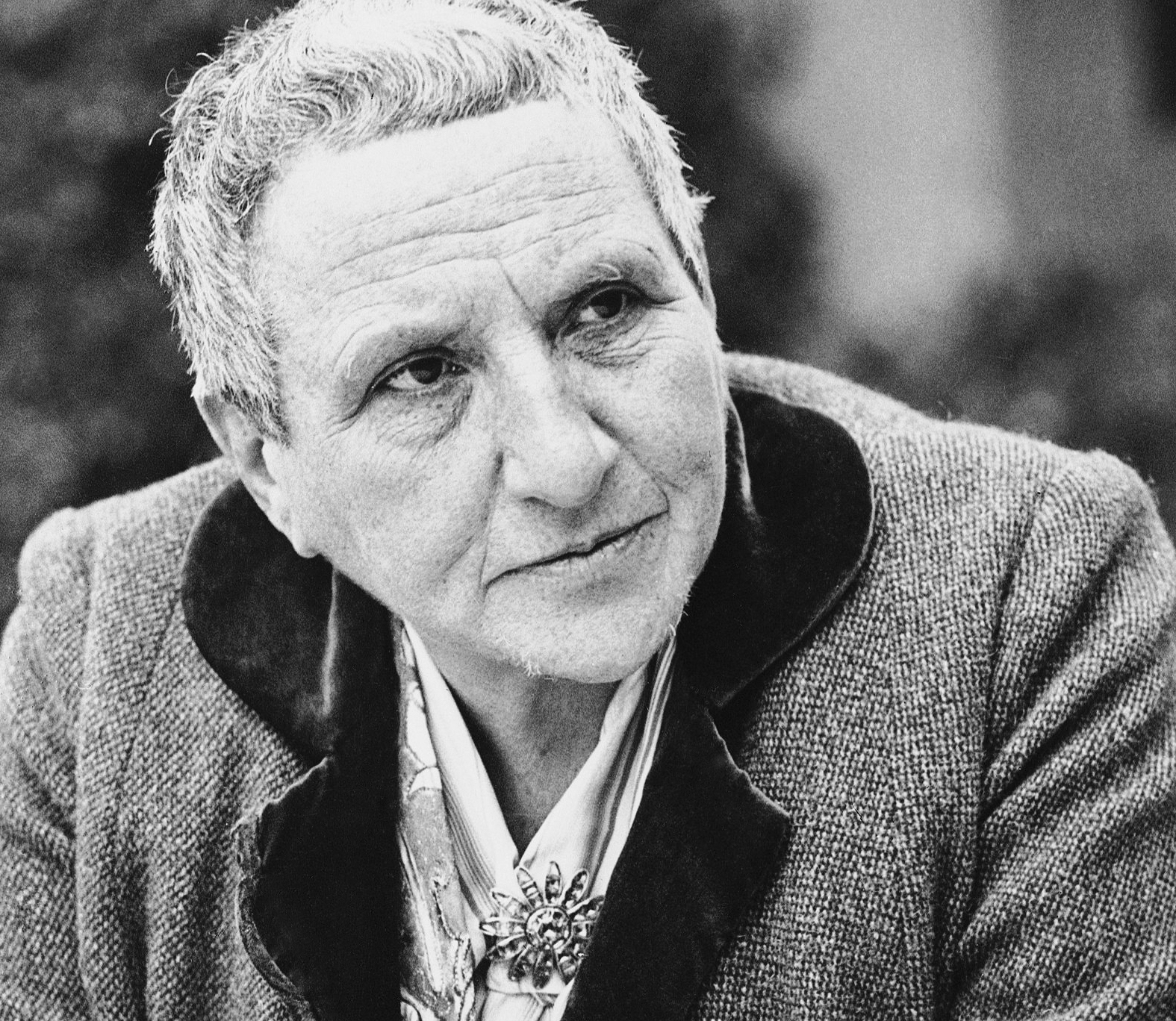



LGBTQ Writers Who Have Won the
Pulitzer Prize
Queer Artists
Whose Work is Making Us Pay Attention
Joe Lycett: Sunday Night at the Palladium
Kristin Key: Between a Redneck in
Portland
Info: Fashion and Clothing
OutSpoken: LGBTQ Storytelling
This Man's Illustrations About Life With His Boyfriend Are Absolutely Adorable
Poetry Slam: Dear Straight
People
Funny That Way:
Documentary About Trans Comic Julia Scotti
Barry Humphries, Known for His Drag Persona Dame Edna
Everage, Dead at 89
Kristin Key: Between a Redneck in
Portland
History of the Queer Art
Movement
Info: Queer Fashion Design
LGBTQ Anime
Minnie Bruce Pratt - US Poet, Essayist
Pierre
Louys - French Poet
William S.
Burroughs - US Author
Rita Mae Brown - US Novelist
Algernon Charles Swinburne - English Poet
Mary
Oliver - US Poet
Gore Vidal
- US Novelist
Andrea
Gibson - American Poet
Antonio Botto - Portuguese Poet
Allen Ginsberg
- US Poet
WH Auden - English Poet
Pat Parker
- US Poet
Truman Capote - US Author
Frank O'Hara - US Poet
Maurice Sendak
- US Author, Illustrator
Carl
Phillips - US Poet
Audre
Lorde - US Poet
Jonathan
Harvey - Playwright (Beautiful Thing )
Elizabeth
Gilbert - US Author (Eat Pray Love)
Countee
Cullen - US Poet
Oliver Sacks - British Author
(Awakenings)
Marijane Meaker - US Author
(Lesbian Pulp Fiction)
Amy M. Homes - US Author (Short
Stories, Novels)
Dr. Cheryl Clarke - US Poet
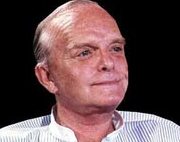

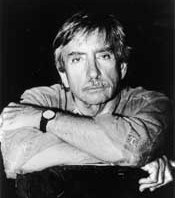

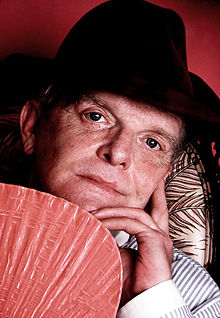
Dr. Cheryl Clarke: Poet and Activist
Art History Teaching Resources: Queer Art 1960s to
Present
Gay Culture: Ancient Wonder or Modern Creation
Pride in Poetry: LGBTQ
Poets
Barry Humphries, Known for His Drag Persona Dame Edna
Everage, Dead at 89
Joe Lycett: Sunday Night at the Palladium
LGBTQ Writers Who Have Won the
Pulitzer Prize
Pride Flag
Sewn From Over 3500 Diversity Messages
Same Sex Relationships Hidden in
Classic Literature
Walt Whitman: America's
Poet as Queer Pioneer
Ian McKellan Reading
Harvey Milk's Hope Speech
Photographer Ron Amato:
Nude Men Among the Dunes
Kehinde Wiley: Black Gay Artist
Maurice Sendak:
Author and Illustrator of Children's Books
Where the Wild Things Are
The
beloved children’s author and illustrator Maurice Sendak
died in 2012 at age 83. He is best known for his book, Where the Wild Things Are. Winner of countless
awards and recognitions, Maurice Sendak is widely
considered the most important children’s book artist of
the 20th century, who wrenched the picture book out of
the safe, sanitized world of the nursery and plunged it
into the dark, terrifying and hauntingly beautiful
recesses of the human psyche.
Maurice Sendak's NY Times Obituary
Believer: Maurice Sendak
Interview
Vanity Fair: Sendak's Last Book
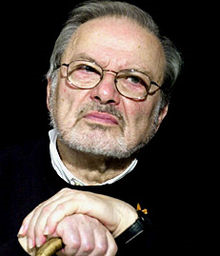

He was born in Brooklyn in 1928 to Polish-Jewish
parents. As Maurice Sendak grew up (lower class, Jewish,
gay) he felt permanently shunted to the margins of
things. “All I wanted was to be straight so my parents
could be happy,” he told The New York Times in a 2008
interview. “They never, never, never knew.” Sendak
lived with his partner, psychoanalyst Dr. Eugene Glynn,
for 50 years before Glynn's death in May 2007.
Poetry Foundation: LGBTQ Pride
Poems
Good Reads: Best Gay
Plays
Young LGBTQ Contemporary
Artists
This Photographer Left Her Husband for a Woman and
Documented It in Portraits
Meet the Creators that Are
Proving that Pride Is a State of Mind
Kehinde Wiley: Black Gay Artist
Artist Jaime Hayde Illustrates Happiness of Gay Love
Why Queer People Love Evan Hanson
Queer Artists Whose Work is Making
Us Pay Attention
Grant Wood: Rural
Painter and Shy Bachelor
American
Gothic
Grant Wood
(1891-1942) was an American painter, best known for his
paintings depicting the rural American Midwest,
particularly American Gothic, which has become an iconic
example of 20th-century American art. As a gay man in
Iowa, he was forced to hide or disguise his same-sex
references and representations, but they are there,
hiding in plain sight.
Wood was
married to Sara Sherman Maxon from 1935–38. He was a
closeted gay man. There was an attempt on the part of a
senior colleague, Lester Longman, to get him fired both
on moral grounds and for his advocacy of regionalism.
Critic Janet Maslin states that his friends knew him to
be "homosexual and a bit facetious in his masquerade as
an overall-clad farm boy."
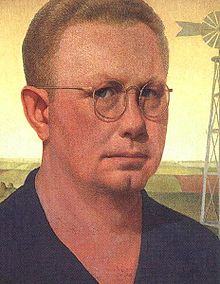

In 1939, the US Post Office refused to distribute a
lithograph, declaring its depiction of a nude man
bathing by a horse trough “pornographic.” Wood, ever the
closeted artist described the work euphemistically as a
“shy bachelor,” and was surprised and affronted, and
cropped the nude figure out of a painting based on the
same image. The idiosyncrasies of his works seem to flow
not simply from the fact that Wood was gay, but from a
deeper, transformative sense of gender. His America can
never be neatly sorted into traditional ideas about
masculine and feminine, and that, even more than the
nudity of the man depicted in the problematic 1939
lithograph, may have been what unsettled the US Post
Office prudes.
In 1930, the same year American Gothic debuted at the
Art Institute of Chicago and made Wood an overnight
sensation, he painted Arnold Comes of Age, a portrait of
his former high school student and assistant Arnold
Pyle. In the painting, Wood depicts the 21-year-old Pyle
as spindly and dark, mournful against the countryside
during the last warm days of autumn, as two
skinny-dippers exhaust themselves at the water’s edge.
At Pyle’s elbow is a butterfly (a gay symbol at the
time) and, like Wood himself, it nearly disappears into
its environment.
The day before his 51st birthday, Wood died of
pancreatic cancer. His estate went to his sister, Nan
Wood Graham, the woman portrayed in American Gothic.
[Source: Text from White Crane Institute]

Queer Composers You Should Know
There’s a Scarcity of Out Ballerinas:
Queer the Ballet is Trying to Change That
Ballet 22: Challenging Gender Norms
Queer Poets to Read Now and Forever
Jazz Musician Dave Koz on Going Silver and Gay Cruising
Essential Plays, Books, and Movies for
Understanding the History of Queer Liberation
Pride in Poetry: LGBTQ
Poets
The Lesbian Photo Book That Changed
Everything
Feed The Id: Live On The Lake with Cory
Wong and Dave Koz
Info: LGBTQ Books and Publications
Up and Coming LGBTQ Musicians
Poetry Foundation: LGBTQ Pride
Poems
3D Artists: Famous LGBTQ
Sculptors
Photographer Ron Amato: Nude
Men Among the Dunes
Fire Island Dance Festival 2
Frida Kahlo: Queer Mexican Painter
Comedian Moms Mabley in 1967
LGBTQ Visual Artists:
Sculptors
|
Michelangelo
Edmonia Lewis
Adolf
Hildebrand
Antonio Canova
Jasper
Johns
Richmond
Barthe
Louise
Abbema
Prem
Sahib
Jehangir Jani
Jehoshua Rozenman
 |
Raul de Nieves
Robert
Pruitt
Florence Wyle
Frances Loring
Robert
Indiana
Ellsworth Kelly
Robert
Wilson
Charles Pachter
Maggi Hambling
Ugo Rondinonen
 |




LGBTQ Art Shows: Now Showing at Museums From Boston to
Berlin
Interview with Comedian Hannah
Gadsby
Queer Composers You Should Know
Steven Menendez: Photos Celebrating the
Earth and the Male Form
Ballet 22: Challenging Gender Norms
Sculpture Unveiled in NYC
Honoring Trans and Nonbinary Communities
Photographer Ron Amato:
Nude Men Among the Dunes
Without JEB’s Photography, The World
Wouldn’t Know Lesbian History
Polari Mag: LGBTQ Arts & Culture
Voguing with Kia LaBeija: Drafted
History of the Queer Art
Movement
How Lauren Ys Channels Queerness Through Their Art
Gay Photographers: Vincent Keith and Oliver Zeuke
Isaac Julien: Behind the
Scenes at MoMA
Trans Nonbinary Performer Tackles Greek Tragedy
Feed The Id: Live On The Lake with Cory
Wong and Dave Koz

Eddie Izzard:
One Woman Show
Eddie Izzard One Woman Show "Charles Dickens' Great
Expectations" is a big hit.
Eddie Izzard is a Brit stand-up comedian, actor, and
activist and something of a slightly manic multi-tasker.
When she is performing her stand up routine it is always
at wonderful frantic pace that she mumbles her hilarious
stories that have the most obscure connections that have
her audiences screaming. She has put her political
campaign on a temporary hold. Her desire to become a
Member Of the UK Parliament for now will take a backseat
to bringing her one-woman show to Off-Broadway.
Izzard is genderfluid and calls herself “somewhat boy-ish
and somewhat girl-ish.“ She uses the word “transgender’
to describe herself and because she is public about this
has become something of a queer idol.
Now she has bought her solo show of Charles Dickens'
classic Creat Expectations to off-Broadway. It’s a
classic tale of convicts, mystery, friendship, rivalry,
unrequited love, revenge, and redemption and in it,
Izzard plays a total of 19 characters from scary Miss
Haversham to young Pip. The script is written by her
brother Mark Izzard and directed by Selina Cadell, and
it opened in Dec 2022 at the Greenwich House Theater to
some initial excellent reviews
Director Selina Cadell‘s production does not rely on
high-tech set and lighting design, quick costume changes
and other visual effects. This is theater as
storytelling in its most elemental sense, with Izzard
herself as the biggest special effect.
Hannah Gadsby: Allstars Supershow
Critically Queer: Being a Gay Student in
the Humanities
Ethan Smith Poem: Letter to the
Girl I Used to Be
GQ Magazine:
Keith Haring Blew Up the Art and Fashion World
LGBTQ Art Shows: Now Showing at Museums From Boston to
Berlin
Poetry Slam: God is Gay
Autostraddle: Lesbian
Photographers You Should Know About
Justin Sayre's Love-In: Music, Laughs, and Hope Through
Gay Lens
Brief History of LGBTQ Art
and Symbolism
Wikipedia: LGBTQ Related Plays
How Curators Are Queering Art History
Gay Photographer George Platt Lynes
Photos of LGBTQ Writers, Artists, and Activists of the 80s
and 90s

Carol Ann Duffy:
Britain's Poet Laureate
Dame Carol Ann Duffy DBE FRSL (born 1955) is a Scottish
poet and playwright. She is Professor of Contemporary
Poetry at Manchester Metropolitan University, and was
appointed Britain's Poet Laureate in May 2009. She is
the first woman, the first Scot and the first openly
LGBTQ person to hold the position.
She was born to a Roman Catholic family in a poor part
of Glasgow, the first child of Frank and Mary who went
on to have another four children, all boys. The family
later moved to England. Duffy was educated in Stafford
at Saint Austin's RC Primary School, St. Joseph's
Convent School and Stafford Girls' High School. Her
literary talent was encouraged by two English teachers,
June Scriven and Jim Walker. She was a passionate reader
from an early age, always wanted to be a writer, and
produced poems from the age of 11.
Her collections include ‘Standing Female Nude’ winner of
a Scottish Arts Council Award, ‘Selling Manhattan’ which
won a Somerset Maugham Award, ‘Mean Time’ winner of the
Whitbread Poetry Award, and ‘Rapture’ which won the TS
Eliot Prize. Her poems address issues such as
oppression, gender, and violence in an accessible
language that has made them popular in schools. She
applied to the University of Liverpool and began a
philosophy degree there in 1974. She had two plays
performed at the Liverpool Playhouse, wrote a pamphlet
‘Fifth Last Song’ and received an honors degree in
philosophy in 1977.
She worked as poetry critic for The Guardian from 1988
to 1989 and was editor of the poetry magazine ‘Ambit’.
In 1996 she was appointed as a lecturer in poetry at
Manchester Metropolitan University and later became
creative director of its Writing School. In 1999, she
was elected as a Fellow of the Royal Society of
Literature.
She was
appointed Poet Laureate in 2009 and was featured on the
South Bank Show with Melvyn Bragg. Also in 2009 Duffy
received an Honorary Doctorate from Heriot-Watt
University.
Duffy was
in a relationship with Scottish poet Jackie Kay.
Andrea Gibson, Poet Laureate of Colorado,
Dies at 49
LGBTQ Writers Who Have Won the
Pulitzer Prize
Slam Poetry: Dear Straight People
Autostraddle: Lesbian
Photographers You Should Know About
Diverse Humanity: LGBTQ-Themed Photo Book
Series
Lion King: London Gay
Men's Chorus
Info: Queer Fashion Design
Tig Notaro Realizes She is a Role Model
for Queer Women
Sculpture Unveiled in NYC
Honoring Trans and Nonbinary Communities
Photographer Ron Amato:
Wet Gay Nudes
UK Comedian Joe Lycett:
Living in Birmingham
Fire Island Dance Festival
Ian McKellan Reading
Harvey Milk's Hope Speech
Isaac Julien: Behind the
Scenes at MoMA
Pride in Poetry: LGBTQ
Poets
Fire Island Dance Festival



Queer Art: 1960s
to Present
From ancient Greece to contemporary art, queer art can
be taught through many art historical trajectories. This
lesson takes a contemporary approach and can be utilized
within surveys of modern/contemporary art or in seminars
pertaining to “art and identity” topics. This lecture
has two key concepts: censorship and visibility. Until
very recently it was not socially acceptable to be out
as an LGBT or Q person. As such, queer art over the
twentieth century has been shaped by, on the one
hand—the need to conceal references to queer identity
and experiences and, on the other—a desire for
visibility: the cultural imperative to create
representations of queer identity because none exist.



There’s a Scarcity of Out Ballerinas:
Queer the Ballet is Trying to Change That
LGBTQ Art Shows That are Spicing Up Global Museums
Queer Men and Their Tattoos
Ballet 22: Challenging Gender Norms
Gay Comedian Joe Lycett: Live at the Apollo
Photographer Meg Allen: Butch
Photo Project
Art History: Queer Art 1960s to Present
Vaginal Davis’ Queer Punk Art Is More Relevant than Ever
Pieces from LGBTQ Artists at Superfine
Art Fair in New York
How Lauren Ys Channels Queerness Through Their Art
Walt Whitman: America's
Poet as Queer Pioneer
Scholars, namely Richard Meyer and Jonathan D. Katz,
have explored how mid-twentieth century artists
(including Andy Warhol, Jasper Johns and Agnes Martin)
developed visual codes to signify queerness in
clandestine ways. After this period, the Stonewell Riots
of 1969 marked a shift towards more visibility. This is
an event that is largely defined as the “before/after”
moment in LGBTQ history, when patrons (many of them
queer and trans people of color) of a mafia-owned gay
bar in New York’s West Village fought back against a
routine police raid. The confrontation was part of a
groundswell of activism tied to the protest spirit of
the period, including civil rights and women’s
liberation, and it led to a new social movement for
lesbian and gay rights.
Unlike previous forms of gay activism, gay liberation
promoted visibility by encouraging people to “come out”
as LGBTQ, rather than remain closeted and/or assimilate
to dominant social norms. This ethos was manifested in
art as well as art history: artists became emboldened to
make art about their sexual identity, and LGBTQ art
historians began to recuperate the work of LGBTQ art
that went unnoticed, had been censored, or written out
of history books. The desire to document and celebrate
depictions of queer identity, life, and history is an
example of the politicization of sexuality that emerged
during this period.



Andrea Gibson, Poet Laureate of Colorado,
Dies at 49
Queer Artists Whose Work is Making
Us Pay Attention
Critically Queer: Being a Gay Student in
the Humanities
MOMA: Creating Safe Spaces for Art-Loving LGBTQ Youth
Slam Poetry: Coming Out Straight
Braden Summers: LA-Based Gay Photographer
Adds Fresh Color to LGBTQ Spectrum
UK Comedian Joe Lycett:
Living in Birmingham
In the 1980s, militant gay activists reclaimed the term
“queer” to confront the homophobia unleashed by the
HIV/AIDS crisis that emerged in that decade, which
disproportionally affected gay men. “Queer” became the
preferred label for many people on the LGBT spectrum
because of its lack of a fixed meaning and the spirit of
social deviance it connotes. Many queer artists embrace
marginality as a position from which to create
self-empowered narratives that resist dominant
understandings of gender, race, class, and sexuality.
For others, queer identity has little to do with their
art. Queer is a reclaimed pejorative for people who
desire someone of the same sex, is pansexual, bisexual,
or any other sexuality that is not lesbian or gay, while
transgender refers to a person whose self-identity does
not conform unambiguously to conventional notions of
male or female gender. While queer and trans are often
related and overlapping identities, they are distinct
and not interchangeable.
[Source: Tara Burk and Amy Raffel, Art History Teaching
Resources]



Lion King: London Gay
Men's Chorus
Billy Strayhorn Introduced
by Duke Elligton
Queer-Inclusive Bluegrass Music
Kristin Key: Between a Redneck in Portland
Info: LGBTQ Books and Publications
History of Gay Art and Symbolism
Queer Tango
Art History: Queer Art 1960s to Present
Funny That Way:
Documentary About Trans Comic Julia Scotti
How Lauren Ys Channels Queerness Through Their Art
Fire Island Dance Festival
UK Comedian Joe Lycett:
Living in Birmingham
Info: LGBTQ Movies and Film
Meet the Creators that Are
Proving that Pride Is a State of Mind
Brief History of LGBTQ Art
and Symbolism

LGBTQ Poets
Mary
Oliver
Carol Ann
Duffy
Richard
Blanco
Saeed Jones
Audre Lorde
Frank O'Hara
Andrea Gibson
Danez Smith
Michelle Tea
Federico Garcia Lorca
Alok
Vaid-Menon
 |
Francisco Aragón
James Baldwin
Elizabeth Bishop
John Giorno
Kari Edwards
Rickey Laurentiis
Adrienne Rich
Tommy Pico
Joshua Jennifer Espinoza
Rafael Campo
Mark Doty
 |
Lee Mokobe
Frank Bidart
Pauli
Murray
Allen Ginsberg
Ifti Nasim
Melvin Dixon
Jack Kerouac
Eileen Myles
June Jordan
Walt Whitman
CP Cavafy
 |

Andrea Gibson, Poet Laureate of Colorado,
Dies at 49
Slam Poetry: Dear Straight People
Tig Notaro Realizes She is a Role Model
for Queer Women
Queer Poets to Read Now and Forever
Young LGBTQ Contemporary
Artists
Smooth and Wicked: The Art
of Mel Odum
Ballet 22: Challenging Gender Norms
Info: LGBTQ Music and Musicians
Voguing with Kia LaBeija: Drafted
Joan E. Biren: Portraits
of Lesbians
Fire Island Dance Festival 2
LGBTQ Designers: Jonathan Adler
and Simon Doonan
Poetry Slam: Dear Straight
People
Tom of Finland:
Homoerotic Artist
"My whole
life long I have done nothing but interpret my dreams of
ultimate masculinity, and draw them.
-Tom of
Finland
"Tom of Finland defied homophobic censorship. He
affirmed and glamorized our sexuality; giving hope and
confidence to gay men at a time when many had
internalized homophobia and sexual guilt. His imagery
turned upside down the stereotype that we were weak and
disgusting. It portrayed gay men as strong and
desirable, which was refreshing and empowering. What Tom
of Finland gave us was an antidote to the negative,
demeaning heterosexual supremacist representations of
homosexuality."
-Peter
Tatchell, British LGBTQ Human Rights Activist
"Tom of Finland is one of the five most influential
artists of the 20th century. As an artist he was superb,
as an influence he was transcendent."
-Harvey
Miller, Art Patron



Tom of Finland Exhibit in
Los Angeles
Celebrating 100th Birthday of Tom
of Finland
David Kordansky Gallery: View the
Works of Tom of Finland
Tom of Finland Foundation: Let's
Go Camping
Love and Liberation Exhibit
The Darkroom Exhibit
Tom of
Finland (1920-1991) was an artist whose sexually charged
drawings of musclemen impacted gay culture. He is known
as the most influential creator of homoerotic images.
Born Touko Laaksonen in a small Finnish town, he was the
son of two school teachers. At 19, Laaksonen moved to
Helsinki to study advertising and began drawing erotic
images.
In 1957, he submitted drawings to Physique Pictorial, an
American magazine, under the pseudonym Tom. When his
gay-themed illustrations were published, the magazine
credited Tom of Finland, a name he assumed for the
remainder of his career.
Tom introduced to mainstream culture a stylized
masculinity in sharp contrast to the effeminate
stereotypes of gay men. His work, which embraced
sailors, bikers, lumberjacks and construction workers in
leather and jeans, became popular and widely distributed
in the gay community.



In the late 1950s, US censorship codes restricted
depiction of “overt homosexual acts” and limited the
distribution of Tom’s work. In the 1962 case of MANual
Enterprises v. Day, the US Supreme Court ruled that
nude male photographs were not obscene. As soft-core gay
pornography flourished, Tom’s illustrations became more
explicit, including exaggerated musculature and
genitalia.
By 1973, Tom was publishing erotic comic books and
exhibiting his work in the mainstream art world. In
1984, he cofounded the Tom of Finland Foundation, which
is dedicated to the preservation of homoerotic artwork.
In 1995, the Tom of Finland Clothing Company introduced
a fashion line based on his art.
Tom created more than 3,500 illustrations in his
four-decade career. Five of Tom of Finland’s drawings
are featured in the permanent collection of the Museum
of Modern Art.
[Source:
LGBTQ Nation, Archives, Equality Forum, LGBTQ History
Month Profile, October 2013]
Queer Tango
You
Tube: Do You Dream in Color?
Funny That Way:
Documentary About Trans Comic Julia Scotti
Info: LGBTQ Television
and Media
Ellen DeGeneres: Gay
Cartoon Characters
List of Gay Men's Choruses
Slam Poetry: Third Gender
This Man's Illustrations About Life With
His Boyfriend Are Absolutely Adorable
Info: LGBTQ Magazines and
Periodicals
Brief History of LGBTQ Art
and Symbolism
Sinners and Saints:
Photography of Michael Stokes
Ballet 22: Challenging Gender Norms
GQ Magazine:
Keith Haring Blew Up the Art and Fashion World
Billy Strayhorn Introduced
by Duke Elligton
Queer Composers You Should Know
Joan E. Biren: Portraits of
Lesbians
Opera: The Love That Dare Not
Speak Its Name
LGBTQ Poets Who
Inspire
Audre
Lorde was a Black feminist, lesbian, poet, mother and
justice warrior. Her writing, activism and poetry speak
to the struggle often faced by people who have been
marginalized by society, including LGBTQ people and
people of color. The last four stanzas of one of her
most famous poems, “The Black Unicorn,” show that even
though progress has been made, more work remains in the
fight for full equality for all people: “The black
unicorn is restless, the black unicorn is unrelenting,
the black unicorn is not free.”
Mary Oliver, an out poet who believed “poetry mustn’t be
fancy,” wrote at length about nature and the beauty of
the world around us. Inspired by other queer women poets
including Edna St. Vincent Millay, she explored the
intersection of herself as a queer woman and the world
in which she lived, embracing everyday beauty.

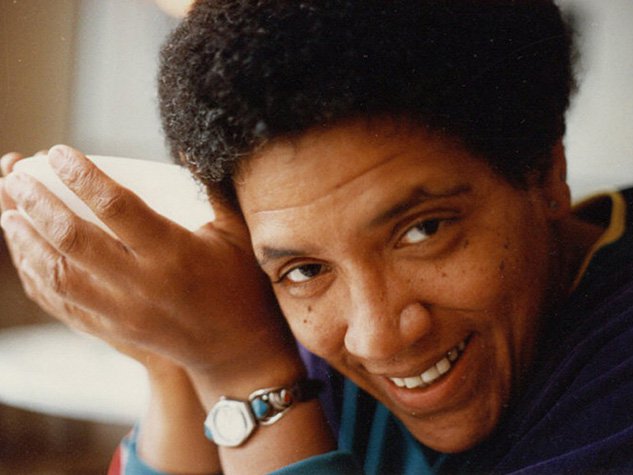
Andrea Gibson is a poet and activist whose work focuses
on gender, politics and the struggles that LGBTQ people
still face. Many of their poems are spoken word, a form
of poetry and performance art characterized by rhyme,
repetition, improvisation and word play that frequently
speaks to issues of social justice and community. One of
Gibson’s most moving poems is their tribute to the
victims of the deadly Pulse nightclub shooting in June
2016.
Fatimah Asghar is a Pakistani, Kashmiri, American poet
and queer woman. In her debut book of poems, “If They
Come For Us,” Asghar focuses on navigating coming of age
and questioning her sexuality without guidance from her
parents, who passed away when she was young. The book
explores what it means to hold an intersectional
identity in today’s world, while still remembering the
history of those who came before.


Chen Chen is an up-and-coming poet who also explores the
intersection of identities in today’s world in his
poetry. His poem “When I Grow Up I Want to Be a List of
Further Possibilities” captures the heart of his work:
“To be, in my spare time, / America for my uncle, who
wants to be China / for me. … To be a cyclone / of
laughter when my parents say / their new coworker is
like that, they can tell / because he wears pink socks,
see, you don’t, so you can’t, / can’t be one of them. To
be the one / my parents raised me to be -- / a season
from the planet / of planet-sized storms.”
A.W. is another young poet who is taking up the reins of
the next generation of poets advocating for equality.
A.W.’s poem “Differences” inspires us to be who we are,
treat everyone equally and always stand up for ourselves
and our friends: “Treat people well, don’t treat them
different because they're different, all people should
be able to do what other people can do if it is a good
choice.”
[Source:
Human Rights Campaign]



LGBTQ Poets Who Inspire
Queer Poets to Read Now and Forever
Poetry Slam: Dear Straight
People
Barry Humphries, Known for His Drag Persona Dame Edna
Everage, Dead at 89
Sinners and Saints:
Photography of Michael Stokes
Walt Whitman: America's
Poet as Queer Pioneer
Kehinde Wiley: Painter of President Obama Official
Portrait
LGBTQ Writers Who Have Won the
Pulitzer Prize
Info: LGBTQ Books and Publications
LGBTQ Art Shows: Now Showing at Museums From Boston to
Berlin
Kristin Key: Between a Redneck in Portland
Adam Lambert on Strictly Come Dancing: Mad About the Boy
The Art Story: Queer Art
LGBTQ America: Arts and Artists
Braden Summers: LA-Based Gay Photographer
Adds Fresh Color to LGBTQ Spectrum
Raising LGBTQ Awareness Through Art
Queer Poets to Read Now and Forever
Without JEB’s Photography, The World
Wouldn’t Know Lesbian History



Opera: The Love That Dare Not
Speak Its Name
Isaac Julien: Behind the
Scenes at MoMA
History of the Queer Art
Movement
Polari Mag: LGBTQ Arts & Culture
This Man's Illustrations About Life With
His Boyfriend Are Absolutely Adorable
Wendy Carlos: Switched On
Bach
Gay Photographers: Vincent Keith and Oliver Zeuke
Brief History of LGBTQ Art
and Symbolism
Info: LGBTQ Music and Musicians
Art History Teaching Resources: Queer Art 1960s to
Present
History of the Queer Art
Movement
Info: LGBTQ Magazines and
Periodicals
These Artworks Captured the Aftermath of Stonewall
Joan E. Biren: Portraits of
Lesbians
Steven Menendez: Photos Celebrating the Earth
and the Male Form
Photographer Ron Amato:
Wet Gay Nudes
List of Queer Poetry
Meet the Creators that Are
Proving that Pride Is a State of Mind
Fire Island Dance Festival
NPR: When Art is Queer




Laurie Rubin:
Blind Jewish Lesbian Opera Singer
Blind since birth, mezzo-soprano
Laurie Rubin tells her empowering story in memoir Do
You Dream in Color? Insights From a Girl Without Sight.
Acclaimed mezzo-soprano opera singer Laurie Rubin has
been blind since birth, is openly lesbian, and of Jewish
background. What better reason to write a memoir? On
paper, she was, obviously, not your typical everyday
teenager growing up. But with determination and a strong
support system, she continually surpassed and redefined
others’ expectations, both professionally in the music
industry and outside of it.
Washington Post: Laurie Rubin Describes Her World of
Color
Out: Opera Singer Inspires With
Her Story
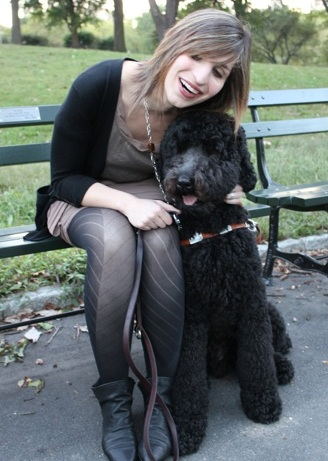
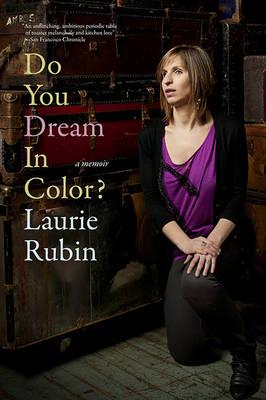
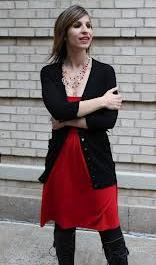
Defying the naysayers since childhood, the lively and
charismatic Rubin released Do You Dream in Color?
Insights From a Girl Without Sight in 2012,
recounting her experiences from childhood to
full-fledged opera singer. An uplifting story about her
journey to follow her dreams, Rubin’s story asks those
universal questions (Who am I? and Where do I fit
in?) while giving an insight into a musical world you
probably know nothing about. Not only does she have a
busy concert schedule, Rubin is also in developing a
curriculum for Yale music (where she earned her master's
degree) that will aim to dispel stereotypes and better
the perceived value of people living with disabilities
by allowing people of all ages and walks of life to
share in the experiences of blindness.
TED Talk: Hannah Gadsby
Tig Notaro Realizes She is a Role Model
for Queer Women
Darcy & Jer Share Their Love Story, Talk TikTok Fame &
Comedy Tour
LGBTQ
Community Center: Arts and Culture
Blithe House Quarterly:
LGBTQ Short Stories
Queer Comedians who are Making Sure Stand-Up is Full of
the Gay Agenda
Interview with Comedian Hannah
Gadsby
Photographer Ron Amato: Wet
Gay Nudes
Poetry Slam: God is Gay
Young LGBTQ Contemporary
Artists
Info:
LGBTQ Humor
Pride Flag
Sewn From Over 3500 Diversity Messages
Queer Arts: List of LGBTQ Organizations
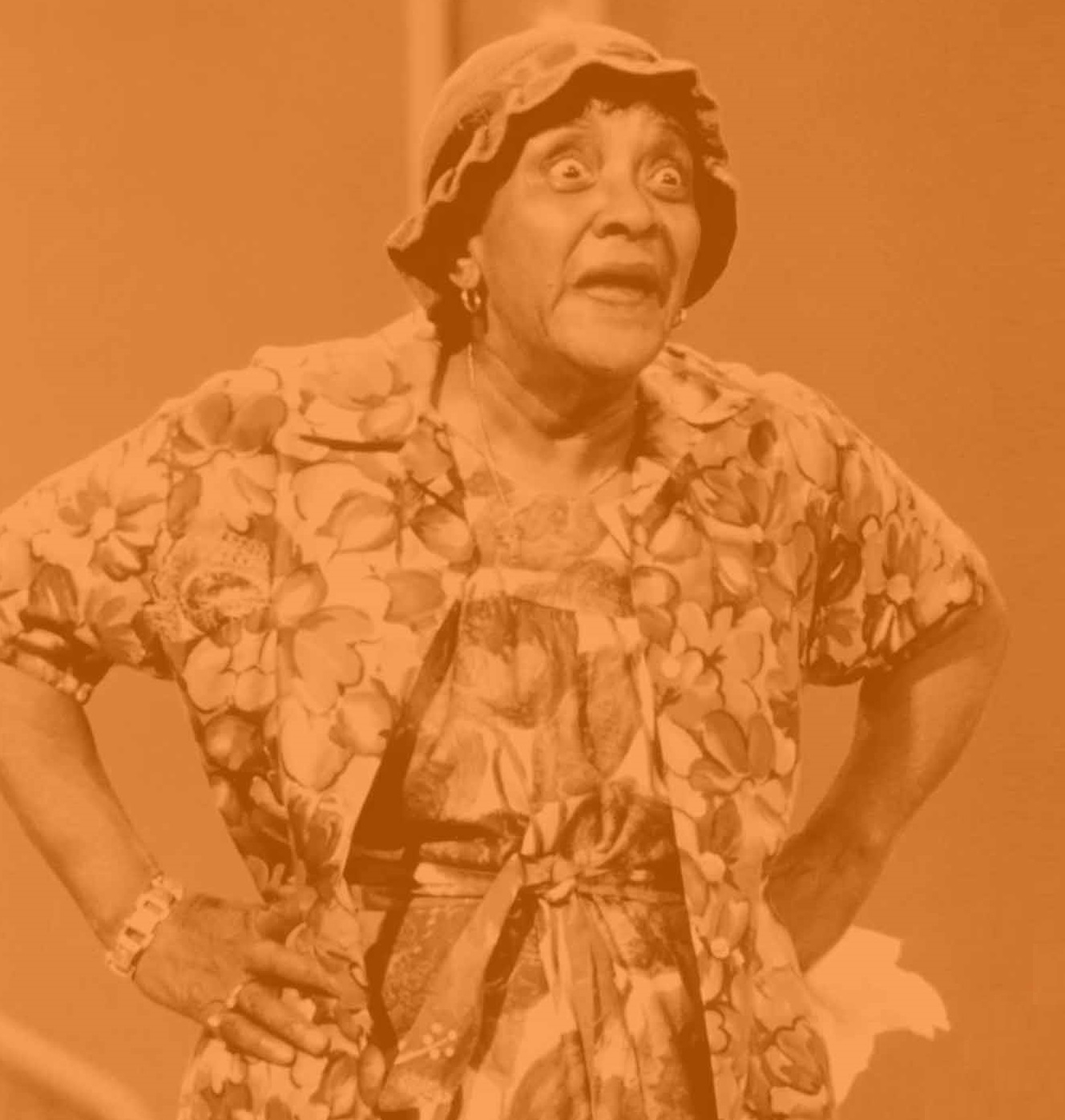
Irrepressible Moms
Mabley
The
African-American actress and comedienne Jackie "Moms"
Mabley was born in 1894 and died in 1975. Though she had
four children and five grandchildren, Mabley never
married and she lived most of her life as a Lesbian.
Although
she was not "out" in the modern sense, certainly Moms
Mabley did break taboos and challenge assumptions
throughout her career with her character of an old
woman, who was sexual, savvy, and irrepressible.
The girl
who survived childhood rape to carve out a successful
career in the inhospitable world of show business grew
up to be Moms, who described her television appearances
by saying, "I looked at the world as my children."
Moms
Mabley: Biographical Notes
Comedian Moms Mabley in 1967
Moms Mabley: Legacy Project
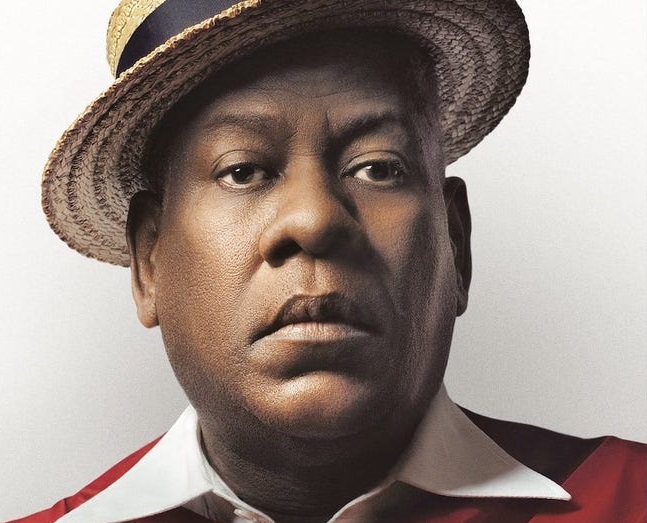

 
LGBTQ Fashion
Icons and Designers
Giorgio
Armani
Pierre
Cardin
Christian
Dior
André Leon Talley
Domenico
Dolce
Stefano
Gabbana
Perry
Ellis
Karl
Lagerfeld
Halston
Thierry
Mugler
Isaac Mizrahi
Yves Saint
Laurent

LGBTQ Dancers
Rudolf Nuryev - Russian Ballet Dancer
Tommy Tune - US Tap Dancer, Broadway Star
Josephine Baker - US Dancer
Isadora Duncan - US Dancer
Alvin
Ailey - US Dancer, Choreographer
Bronislava Nijinska - Russian Dancer
Vaslav Nijinsky - Russian Dancer
Bill T
Jones - US Dancer, Choreographer
Kellen
Stancil - US Dancer, Choreographer
Hallelujah: Queer Dance About
Love, Hate, and Religion
Slam Poetry: Queer Marriage Poem
MOMA: Creating Safe Spaces for Art-Loving LGBTQ Youth
Vancouver Men's Chorus performs Anthem by
Leonard Cohen
Coming Out: Broadway Star
Jonathan Burke
Slam Poetry: Coming Out Straight
Sculpture Unveiled in NYC
Honoring Trans and Nonbinary Communities
Ethan Smith Poem: Letter to the
Girl I Used to Be
Info: LGBTQ Music and Musicians
Young LGBTQ Contemporary
Artists
Darcy & Jer Share Their Love Story, Talk TikTok Fame &
Comedy Tour
Ballet 22: Challenging Gender Norms
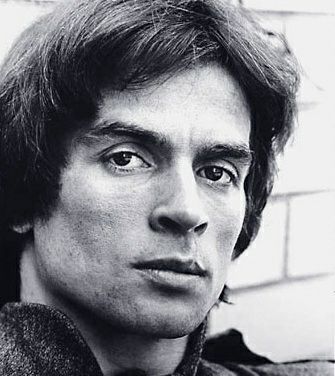
Dancer
Rudolph Nureyev
The
heartbreaking letter to dance that Nureyev wrote while
dying of AIDS in 1993...
It was the smell of my skin changing, it was getting
ready before class, it was running away from school and
after working in the fields with my dad because we were
ten brothers, walking those two kilometers to dance
school.
I would
never have been a dancer, I couldn't afford this dream,
but I was there, with my shoes worn on my feet, with my
body opening to music, with the breath making me above
the clouds. It was the sense I gave to my being, it was
standing there and making my muscles words and poetry,
it was the wind in my arms, it was the other guys like
me that were there and maybe wouldn't be dancers, but we
swapped the sweat, silences, barely. For thirteen years
I studied and worked, no auditions, nothing, because I
needed my arms to work in the fields.
But I
didn't care: I learned to dance and dance because it was
impossible for me not to do it, it was impossible for me
to think I was elsewhere, not to feel the earth
transforming under my feet plants, impossible not to get
lost in music, impossible not not to get lost in music
using my eyes to look in the mirror, to try new steps.
Everyday I woke up thinking about the moment I would put
my feet inside my slippers and do everything by tasting
that moment. And when I was there, with the smell of
camphor, wood, tights, I was an eagle on the rooftop of
the world, I was the poet among poets, I was everywhere
and I was everything.
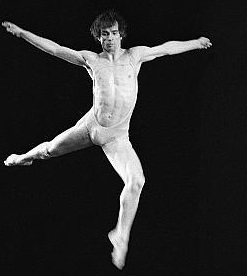
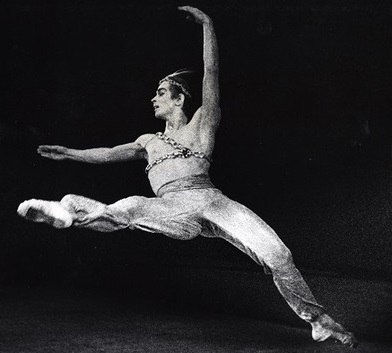
Queer Men and Their Tattoos
List of Queer Poetry
LGBTQ Writers Who Have Won the
Pulitzer Prize
Joan E. Biren: Portraits
of Lesbians
Ethan Smith Poem: Letter to the
Girl I Used to Be
Comedian Zoe Lyons on the Exciting Rise
of Queer and Trans Comedy
Gay Comedians in Their Youth
The Art Story: Queer Art
Walt Whitman: America's
Poet as Queer Pioneer
LGBTQ Art Shows: Now Showing at Museums From Boston to
Berlin
Gay Comedian Joe Lycett: Live at the Apollo
LGBTQ Short Stories
I remember a ballerina El èna Vadislowa, rich family,
well taken care of, beautiful. She wanted to dance like
me, but later I realized it wasn't like that. She danced
for all the auditions, for the end of the course show,
for the teachers watching her, to pay tribute to her
beauty. Two years prepared for the Djenko contest. The
expectations were all about her. Two years he sacrificed
part of his life. He didn't win the contest. She stopped
dancing, forever. He didn't resist. That was the
difference between me and her. I used to dance because
it was my creed, my need, my words that I didn't speak,
my struggle, my poverty, my crying. I used to dance
because only there my being broke the limits of my
social condition, my shyness, my shame. I used to dance
and I was with the universe on my hands, and while I was
at school, I was studying, arraising the fields at six
am, my mind endured because it was drunk with my body
capturing the air.
I was
poor, and they paraded in front of me guys performing
for pageants, they had new clothes, they made trips. I
didn't suffer from it, my suffering would have been
stopping me from entering the hall and feeling my sweat
coming out of the pores of my face. My suffering would
have been not being there, not being there, surrounded
by that poetry that only the sublimation of art can
give. I was a painter, poet, sculptor.
The first dancer of the year-end show got hurt. I was
the only one who knew every move because I sucked,
quietly every step. They made me wear his new, shiny
clothes and dictated me after thirteen years, the
responsibility to demonstrate. Nothing was different in
those moments I danced on stage, I was like in the hall
with my clothes off. I was and I used to perform, but it
was dancing that I cared. The applause reached me far
away. Behind the scenes, all I wanted was to take off
that uncomfortable tights, but everyone's compliments
came to me and I had to wait. My sleep wasn't different
from other nights. I had danced and whoever was watching
me was just a cloud far away on the horizon. From that
moment my life changed, but not my passion and need to
dance. I kept helping my dad in the fields even though
my name was on everyone's mouth. I became one of the
brightest stars in dance.
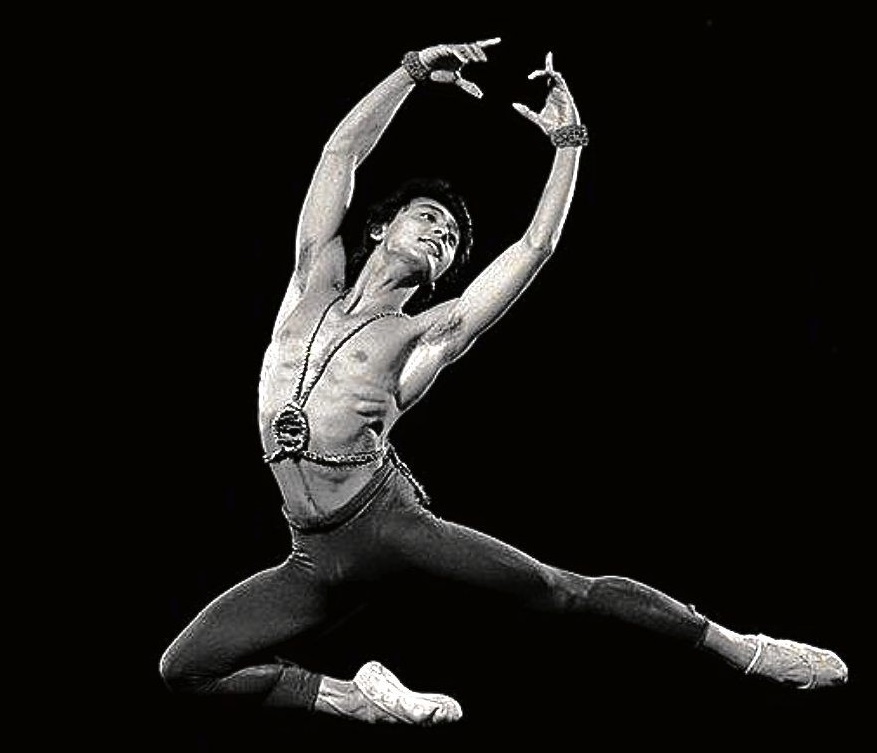
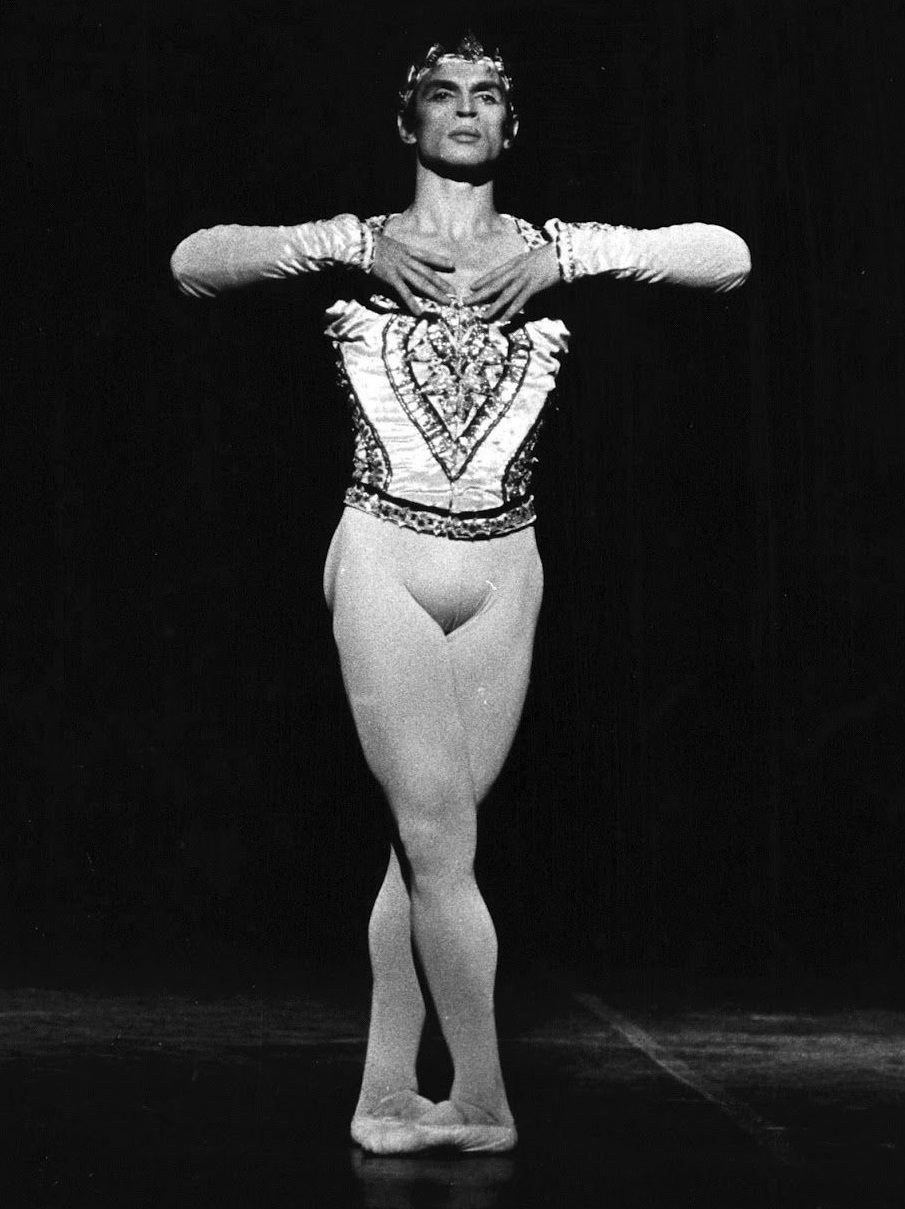
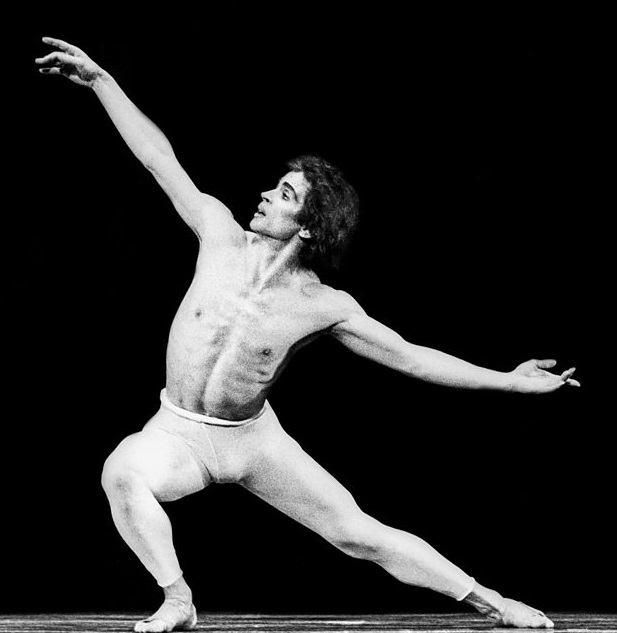
Isaac Julien: Behind the
Scenes at MoMA
SF
Gay Men's Chorus: Every Sperm is Sacred
Tango: John Whaite and Johannes Radebe
LGBTQ Art Shows: Now Showing at Museums From Boston to
Berlin
Meet the Creators that Are
Proving that Pride Is a State of Mind
GQ Magazine:
Keith Haring Blew Up the Art and Fashion World
Kellen Stancil: Dance
Performance at Stonewall Day 2020
Brave: Duet Dance by Cleo and Jude
Bisexual Poets You Should Be Reading
Queer Composers You Should Know
Autostraddle: Lesbian
Photographers You Should Know About
Now I know I'm going to die, because this disease
doesn't forgive, and my body is trapped in a pram, blood
doesn't circulate, I lose weight. But the only thing
that goes with me is my dance my freedom to be. I'm
here, but I dance with my mind, fly beyond my words and
my pain. I dance my being with the wealth I know I have
and will follow me everywhere: that I have given myself
the chance to exist above effort and have learned that
if you experience tiredness and effort dancing, what if
you dance sits for effort, if we pity our bleeding feet,
if we chase only the aim and don't understand the full
and unique pleasure of moving, we don't understand the
deep essence of life, where the meaning is in its
becoming and not in appearing. Every man should dance,
for life. Not being a dancer, but dancing.
Who will never know the pleasure of walking into a hall
with wooden bars and mirrors, who stops because they
don't get results, who always needs stimulus to love or
live, hasn't stepped into the depths of life, and will
abandon every time life won't give him what he wants.
It's the law of love: you love because you feel the need
to do it, not to get something or to be reciprocated,
otherwise you're bound to unhappiness. I'm dying, and I
thank God for giving me a body to dance so that I
wouldn't waste a moment of the wonderful gift of life.
Vancouver Men's Chorus performs Anthem by
Leonard Cohen
Info: Fashion and Clothing
Gay Photographer: Terry Hastings
LGBTQ Art Shows: Now Showing at Museums From Boston to
Berlin
Lesbian Stand-Up Comedian: DeAnne Smith
Joe Lycett: Sunday Night at the Palladium
Darcy & Jer Share Their Love Story, Talk TikTok Fame &
Comedy Tour
Philadelphia: Opera Scene
Info: LGBTQ Authors and Books
Kelli Dunham: Nun Turned
Genderqueer Standup Comic
What is Queer Art?
H ow has queerness within the arts
historically pushed boundaries, and continues to do so,
in a world that is both increasingly accepting but
simultaneously divided?
In April 2017, Tate Britain opened
the first major exhibition dedicated to queer British
art. 2017 marks the 50 year anniversary of the partial
decriminalization of homosexuality, and Tate is just one
of the many establishments around the country marking
this occasion with an exhibition focusing on LGBTQ
themes.
As a self-identified queer artist, I’m often asked,
‘what is queer art?’ The implication being that it is
different from just ‘art’. It is this concept of
otherness which is integral to understanding its
meaning.
According to Tate, queer art is:
“Art of homosexual or lesbian imagery that is based
around the issues that evolved out of the gender and
identity politics of the 1980s.”

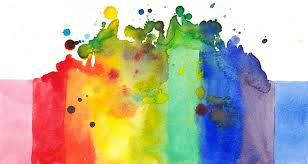

There’s a Scarcity of Out Ballerinas:
Queer the Ballet is Trying to Change That
LGBTQ Art Shows That are Spicing Up Global Museums
Queer Men and Their Tattoos
Ballet 22: Challenging Gender Norms
Gay Comedian Joe Lycett: Live at the Apollo
Photographer Meg Allen: Butch
Photo Project
Art History: Queer Art 1960s to Present
Vaginal Davis’ Queer Punk Art Is More Relevant than Ever
Pieces from LGBTQ Artists at Superfine
Art Fair in New York
How Lauren Ys Channels Queerness Through Their Art
Walt Whitman: America's
Poet as Queer Pioneer
However, simply defining queer art as art made by people
who are homosexual or lesbian, is as reductive as
defining queer people as those who have same-sex
relationships. Whilst love, sex and desire are often
themes within queer art, it is problematic to focus
merely on this. For further definitions, if we look at
‘queer’ in the dictionary, we see: "adjective, queerer,
queerest... strange or odd from a conventional
viewpoint... unusually different."
As well as being an adjective, it is also increasing
used as a verb. I will look at how artists and curators
take familiar imagery and ideas and queer them. Given
that the word queer has been re-appropriated by those
who may previously have experienced the word as an
insult, this also separates it as being related to
sexuality; it is political.
According to David J Getsy, in Queer Documents of
Contemporary Art (2016): “Historically, ‘queer’ was the
slur used against those who were perceived to be or made
to feel abnormal. Beginning in the 1980s, this negative
speech act was reappropriated and embraced as a badge of
honor. While queer draws its politics and affective
force from the history of non-normative, gay, lesbian
and bisexual communities, it is not equivalent to these
categories nor is it an identity. Artists who identify
their practices as queer today call forth utopian and
dystopian alternatives to the ordinary, adopt outlaw
stances, embrace criminality and opacity, and forge
unprecedented kinships and relationships.”
In ‘Art and Homosexuality: A
History of Ideas’ (2011), Christopher Reed discusses
what he calls the ‘open secret’ of the early
avant-garde, arguing that: "Homosexuality was an
essential element in creating and sustaining the
avant-garde. Important avant-garde alliances…were
grounded in the experience of sharing and keeping
secrets.”



Keith Haring’s Life: TV Series by ‘Looking’ Director
Andrew Haigh
Dr. Cheryl Clarke: Poet and Activist
Bisexual Poets You Should Be Reading
Wendy Carlos: Switched On
Bach
There’s a Scarcity of Out Ballerinas:
Queer the Ballet is Trying to Change That
Brilliant LGBTQ Opera Stars You Should Know
Feed The Id: Live On The Lake with Cory
Wong and Dave Koz
How Lauren Ys Channels Queerness Through Their Art
Billy Strayhorn Introduced
by Duke Elligton
Artist Jaime Hayde Illustrates Happiness of Gay Love
The Art Story: Queer Art
He continues: “Homosexuality’s’ status as an ‘open
secret’- constantly suspected and hinted at but never
frankly acknowledged- is among the defining
characteristics of the modernist avant-garde…in a
culture that exalts individualism as an ideal for a
middle class that, in fact, lives and works largely
according to prescribed patterns, engagement with
avant-garde art allows audiences to indulge in vicarious
individualistic transgression without risking loss of
authority."
‘Queering’ is an approach used by
artists to reinterpret a cultural work through a queer
lens. Artist Deborah Kass (b. 1952) is known for her
appropriations of Andy Warhol’s screen printed
portraits, replacing the subjects with her own queer
female heroines- Gertrude Stein, lesbian writer and
early collector of artists such as Picasso, appears in
place of Chairman Mao, and Barbra Streisand takes the
place of Warhol’s Elvis. Appearing herself ‘in drag’ as
a Jewish, female Warhol, Kass plays with popular imagery
and expresses her desire to be represented, as a queer,
Jewish woman.
In recent years, largely due to the
popularity of US reality show, Rupaul’s Drag Race, there
has been a large resurgence of interest in drag: large
enough to attract the attention of a mainstream
audience. Two queens every episode ‘lip-sync for their
lives’ for the judges. No sooner had RuPaul
re-popularized the lipsync, it was swiftly repackaged
for a mainstream non-queer audience for entertainment
purposes, on ‘Lipsync Challenge’. For many, lip-syncing
is a powerful and often moving form of gender
performance art, originated by drag performers on stages
within queer spaces.

It could be claimed that
marginalized groups have created some of the most
progressive elements of our culture, queer people being
no exception.
As issues relating to rights of women, LGBTQ people and
racial minorities are more frequently emerging through
popular culture, and social media, we are seeing the
emergence of language that is allowing many people to
identify themselves in new ways.
[Source: Kate Shields, Medium, May 2017]
Queer Tango
You
Tube: Do You Dream in Color?
Funny That Way:
Documentary About Trans Comic Julia Scotti
Info: LGBTQ Television
and Media
Ellen DeGeneres: Gay
Cartoon Characters
List of Gay Men's Choruses
Slam Poetry: Third Gender
This Man's Illustrations About Life With
His Boyfriend Are Absolutely Adorable
Info: LGBTQ Magazines and
Periodicals
Brief History of LGBTQ Art
and Symbolism
Sinners and Saints:
Photography of Michael Stokes
Ballet 22: Challenging Gender Norms
GQ Magazine:
Keith Haring Blew Up the Art and Fashion World
Billy Strayhorn Introduced
by Duke Elligton
Queer Composers You Should Know
Joan E Biren: Portraits of
Lesbians
Opera: The Love That Dare Not
Speak Its Name

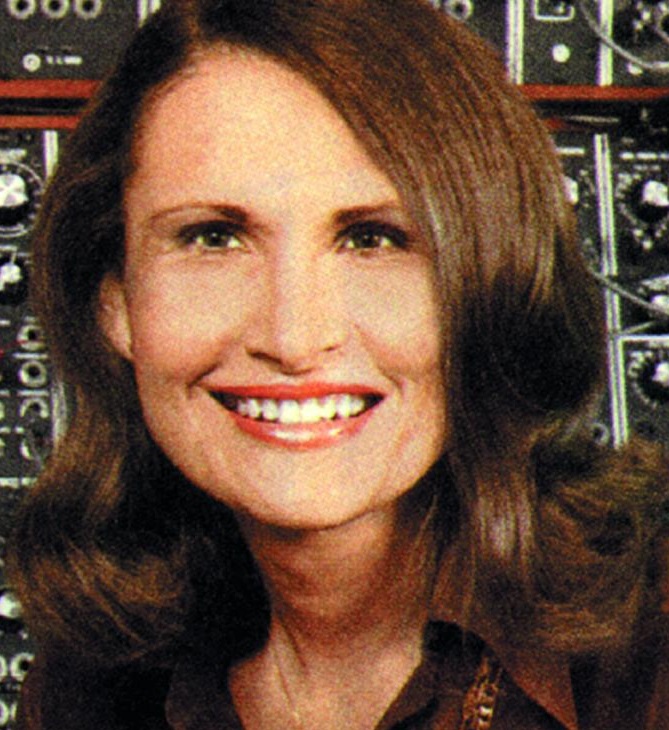

Wendy Carlos: Trans Musician of Electronic Baroque
Switched-On Bach
Wendy Carlos (born Walter Carlos,
1939) is a transgender American musician and composer
best known for her electronic music and film scores.
Born and raised in Rhode Island, Carlos studied physics
and music at Brown University before moving to New York
City in 1962 to study music composition at Columbia
University. Studying and working with various electronic
musicians and technicians at the city's
Columbia-Princeton Electronic Music Center, she helped
in the development of the Moog synthesizer, the first
commercially available keyboard instrument created by
Robert Moog.
Carlos came to prominence with
Switched-On Bach (1968), an album of music by Johann
Sebastian Bach performed on a Moog synthesizer, which
helped popularize its use in the 1970s and won her three
Grammy Awards. Its commercial success led to several
more albums, including further synthesized classical
music adaptations, and experimental and ambient music.
She composed the score to two Stanley Kubrick films -- A
Clockwork Orange (1971) and The Shining (1980) -- and
Tron (1982) for Walt Disney Productions. In 1979, Carlos
raised public awareness of transgender issues by
disclosing she had been living as a woman since at least
1968, and in 1972 had undergone sex reassignment
surgery.
Biographical Notes: Wendy Carlos
NPR: New Biography of Trans Woman Wendy Carlos
Wendy Carlos: Beauty and trauma of Being Openly Trans
Wendy Carlos: Switched On
Bach

Willmer Broadnax:
Transgender Gospel Singer
Willmer "Little Axe" Broadnax (1916–1992) was a
transgender African-American hard gospel quartet singer.
A tiny man with glasses and a high powerful tenor voice,
he worked and recorded with many of the most famous and
influential groups of his day.
"Little
Axe" was born in Houston, Texas, and after moving to
Southern California in the mid-1940s he and his brother,
William, joined the ‘Southern Gospel Singers’, a group
that performed primarily on weekends. The Broadnax
brothers soon formed their own quartet the ‘Golden
Echoes’.
"Little Axe" eventually left for Atlanta, where he
joined the ‘Five Trumpets’ but Willmer stayed on as lead
singer with the ‘Golden Echoes’. In 1949 the group,
augmented by future Soul Stirrer Paul Foster, recorded a
single of ‘When the Saints Go Marching In’ for Specialty
Records. Label chief Art Rupe decided to drop them
before they could record a follow-up, and shortly
thereafter the Golden Echoes disbanded.
In 1950
"Little Axe" joined the ‘Spirit of Memphis Quartet’
which featured two other leads: Jethro "Jet" Bledsoe, a
bluesy crooner, and Silas Steele, an overpowering
baritone. This was one of the most impressive line-ups
in quartet history.
‘The
Spirit of Memphis Quartet’ recorded for King Records and
"Little Axe" appeared on their releases at least until
1952. However, shortly after that he moved on, working
with the ‘Fairfield Four’ and in the beginning of the
‘60s the ‘Five Blind Boys of Mississippi’ as one of the
replacements for Archie Brownlee.
Following that, until 1965 he headed a quartet called
‘Little Axe and the Golden Echoes’ which released some
singles on Peacock Records. By then quartet singing was
fading as a commercial phenomenon, and "Little Axe"
retired from touring, though he did record occasionally
with the ’Blind Boys’.
Continuing to perform well into his 70s, it wasn't until
an autopsy was performed following his death in 1992,
that it was revealed Broadnax had been assigned female
at birth.
Gay Photographers: Vincent Keith and Oliver Zeuke
Poetry Slam: Dear Straight
People
Autostraddle: Lesbian
Photographers You Should Know About
Dana Goldberg: Jewish Lesbian Comedian
Out
Beat: America's First LGBTQ Jazz Festival
Meet the Creators that Are
Proving that Pride Is a State of Mind
Brief History of LGBTQ Art
and Symbolism
Info: Queer Fashion Design
Photographer Meg Allen: Butch
Photo Project
LGBTQ Designers: Jonathan Adler
and Simon Doonan
Pride in Poetry: LGBTQ
Poets
Without JEB’s Photography, The World
Wouldn’t Know Lesbian History
List of Queer Poetry
Brief History of LGBTQ Art
and Symbolism

Classical
Composers: What's So Gay About American Music?
Decoding
a gay aesthetic in music...
Musicologists now seem to agree that Handel was gay. So,
it is thought, was Schubert. About Tchaikovsky there is
no doubt: definitely gay, along with Britten, Copland
and many other major composers and musicians. They may
not have been gay in the modern sense of the word, as
the defining component of their sexual identity.
Certainly not Handel, who hid what must have been
terrible loneliness under a cloak of irascible
heartiness. Nor Schubert, whose relationships with the
young men in his circle still elude our understanding.
Schubert's devoted friends considered the pudgy,
bespectacled and sickly composer a genius in their
midst. But who was sleeping with whom? We're not sure.
That we can now flesh out these giants' stories with
this crucial missing component of their character is due
to the efforts of some pioneering cultural historians
and musicologists. Yet, along with the outing of past
master composers and musicians there has been a more
dubious effort by some to find evidence of a collective
gay sensibility in their music. What exactly is a gay
sensibility? With today's gay icons ranging from the
brainy, unkempt liberal firebrand Congressman Barney
Frank to the stylish, flamboyant and cuttingly funny
fashion guru Carson Kressley of Queer Eye for the
Straight Guy, who can say? And if it does exist, just
how is a gay sensibility expressed in music? Especially
purely instrumental, or "absolute," music?



Comedian Moms Mabley in 1967
Superstar Tenor Russell Thomas on Being a Black Queer
Man in Opera
Wendy Carlos: Switched On
Bach
History of the Queer Art
Movement
Feed The Id: Live On The Lake with Cory
Wong and Dave Koz
Fire
Island Artists Registry
GQ Magazine:
Keith Haring Blew Up the Art and Fashion World
Art Scene Today: LGBTQ Artists
Queer Arts: List of LGBTQ Museums and Galleries
Essential Plays, Books, and Movies for
Understanding the History of Queer Liberation
The latest to enter the discussion is Nadine Hubbs, a
professor of music and women's studies at the University
of Michigan, whose new book, The Queer Composition of
America's Sound: Gay Modernists, American Music and
National Identity, has just been released by University
of California Press. This is an ambitious, provocative
and impressively documented work, with more than 70
pages of detailed footnotes for a 178-page text. It
tries to prove that what has come to be considered the
distinctive American sound in mid-20th-century American
music (that Coplandesque tableau of widely spaced
harmonies and melancholic tunes run through with
elements of elegiac folk music and spiked with jerky
American dance rhythms) was essentially invented by a
group of Manhattan-based gay composers: Copland, of
course, and Virgil Thomson, Paul Bowles, David Diamond,
Marc Blitzstein, Leonard Bernstein, Samuel Barber and
Ned Rorem.
Ms. Hubbs's treatise, which focuses mostly on Copland
and Thomson, is enriched by her keen sensitivity to
traces of coded gay sexuality, veiled homophobia and
cultural anxieties in American music and life during the
early decades of the 20th century. The book will rightly
provoke heated discussion in musicological and
queer-history circles. My gay brothers and sisters
should welcome Ms. Hubbs's account of the pivotal role
played by gay composers in the development of a musical
idiom that as the book argues, still signifies
"America," not just in the concert hall but also in
movies, television and commercial culture.
Yet, I suspect that many musicians, however fascinated
by Ms. Hubbs's treatise, will share my discomfort over
the notion of trying to identify anything as elusive as
a gay sensibility in music. It's significant, I think,
that most of the advance praise for the book ("a
landmark study," "breathtakingly original history")
comes from cultural historians, not musicians. My aim
here is not to review the book but to raise the stakes
for the debate Ms. Hubbs's work is sure to provoke.


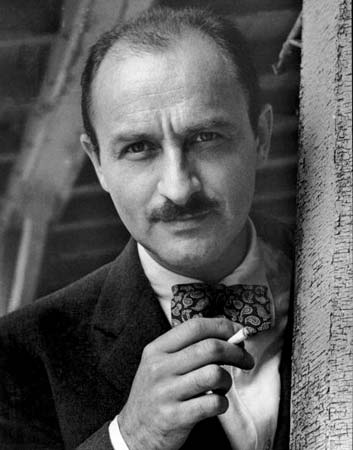
Artist Jaime Hayde Illustrates Happiness of Gay Love
Gay Photographer George Platt Lynes
Ian McKellan Reading
Harvey Milk's Hope Speech
LGBTQ Writers, Artists and
Activists of the 80s and 90s
Kristin Key: Between a Redneck in
Portland
Jazz Musician Dave Koz on Going Silver and Gay Cruising
Essential Plays, Books, and Movies for
Understanding the History of Queer Liberation
Smooth and Wicked: The Art
of Mel Odum
Tom of Finland Exhibit in
Los Angeles
Hymn for Alvin Ailey
One admiring blurb on the dust jacket comes from a
well-known musicologist, Susan McClary, winner of a
MacArthur Foundation "genius" award, whose contentious
1991 article Constructions of Subjectivity in
Schubert's Music became a manifesto for a number of
queer theorists. Ms. McClary tried to identify
homosexual qualities in the slow movement of Schubert's Unfinished Symphony. Her notion that Schubert was
inviting listeners to "forgo the security of a centered,
stable tonality" and "experience (even enjoy) a
flexible sense of self," has always struck me as a
convoluted way to account for perfectly explicable
disruptions of key.
But Ms. McClary's lead was followed by smart critics
like K. Robert Schwarz, long a contributor to The New
York Times, who died in 1999. Schwarz wrote impassioned
liner notes for a shamelessly commercial though
perfectly harmless 1995 recording, Out Classics:
Seductive Classics by the World's Greatest Gay
Composers.
Before long, Schwarz speculated, "we may possess the
analytic tools to decode a gay aesthetic in music." As I
suggested at the time, I cannot imagine how this would
work. Will theorists check chord components against a
table of telltale interval combinations? Will we someday
speak not only of tonic and dominant chords but also of
butch and femme chords? Is Ms. Hubbs heading down that
path? She is least convincing when discussing the
particulars of the music in question. What she does
brilliantly is amass evidence of the pervasive influence
Copland and his gay composer colleagues had on the
formation of the American national identity.


Info: LGBTQ Television
and Media
Sinners and Saints:
Photography of Michael Stokes
LGBTQ Artists in Bay Area
Voguing with Kia LaBeija: Drafted
Fire Island Dance Festival
Billy Strayhorn Introduced
by Duke Elligton
Info: LGBTQ Magazines and
Periodicals
Gay Photographer: Terry Hastings
UK Comedian Joe Lycett:
Living in Birmingham
Joan E. Biren: Portraits
of Lesbians
In her introduction Ms. Hubbs points out that no less an
authority than the United States Army confirms Copland's
status as "America's most prominent composer." This
claim comes from an essay accompanying a pair of
recordings of Copland's music by the Army Field Band and
Soldiers' Chorus, released in 2000 to celebrate the
centennial of his birth. Moreover, the essay points to
Copland's life and career as a quintessentially American
story and talks glowingly of his Jewish heritage, his
Russian immigrant parents, his sensitivity to racial
prejudice and admirable collaborations with black
artists. But never hinted at is Copland's homosexuality,
which of course would have branded him as unfit for
service in the military.
So how did Copland's music, with its "sonic
representation of American vastness and rugged, simple
beauty," as Ms. Hubbs puts it, come to be the most
potent cultural emblem of Americanness? How did Copland
and the gay composers in his circle come to write music
the way they did? Though often too sweeping and
sometimes laden with jargon (one subchapter is titled Music as Sex as Identity and as Identity Solvent),
the book sheds more light on these questions than any
study to date. Take Ms. Hubbs's comments on the
aggressively homophobic Charles Ives in the subchapter Ives, American Music and Mutating Manliness. Ives came
of age at a time when American music was obsequiously
beholden, Ives believed, to European late Romanticism.
Ives considered American composers sissified. He wanted
them to shape up, get some spine and invent a radically
new American sound that embraced vernacular American
music. He wanted the audience to stop whining and take
its dissonance like a man.


TED Talk: Hannah Gadsby
Queer Comedians who are Making Sure Stand-Up is Full of
the Gay Agenda
Walt Whitman: America's
Poet as Queer Pioneer
The Art Story: Queer Art
Feed The Id: Live On The Lake with Cory
Wong and Dave Koz
Stevie Sings “Maybe This Time” - Schitt’s
Creek
3D Artists: Famous LGBTQ
Sculptors
Photographer Meg Allen: Butch
Photo Project
Gay Photographer: Steven Menendez
LGBTQ Designers: Jonathan Adler
and Simon Doonan
Billy Strayhorn Introduced
by Duke Elligton
Young LGBTQ Contemporary
Artists
Ms. Hubbs places Ives's diatribes in the context of the
genuine crisis of confidence in American music at the
time. The composer appears "less as an eccentric crank
with personal issues concerning women, queers and
music," she writes, "than as a stentorian mouthpiece for
interlinked cultural anxieties around gender, sexuality,
musicality and national identity that significantly
shaped 20th-century American music."
Paradoxically, it was Copland and his gay composer
colleagues who answered Ives's call, steered American
music through those anxieties and found the new American
voice. They were bound together by codes of secrecy, and
with good reason. To understand the social climate they
faced, consider that in 1942, while he was the powerful
chief music critic of The New York Herald Tribune,
Thomson was arrested in a raid on a private house in
Brooklyn where gay professionals socialized with young
men, including sailors from the nearby Brooklyn Navy
Yard. After he spent a night in jail, the charges
against Thomson were dropped, and the incident was
hushed up, though a veiled reference to his disgrace
turned up in a Walter Winchell gossip column.
Perhaps a sense of separateness emboldened this circle
of gay composers, who shared an affinity for French
culture and aesthetics, to distance themselves from the
domineering, aggressive (meaning rigorously German)
brand of 1920's modernism. Copland first turned to jazz
as a vehicle to break free. Jazz was by far the most
original American music. But eventually he found it hard
to incorporate this improvised art into formal concert
works. Thomson impishly called Copland's short-lived
venture writing jazz-infused concert works his "one wild
oat."

Lesbian
Photographers You Should Know About
Janelle Monae: Being a
Queer Black Artist
Pieces from LGBTQ Artists at Superfine
Art Fair in New York
Isaac Julien: Behind the
Scenes at MoMA
LGBTQ Art Shows: Now Showing at Museums From Boston to
Berlin
How Lauren Ys Channels Queerness Through Their Art
Sinners and Saints:
Photography of Michael Stokes
Braden Summers: LA-Based Gay Photographer
Adds Fresh Color to LGBTQ Spectrum
Kristin Key: Between a Redneck in Portland
Bisexual Poets You Should Be Reading
In later life Thomson claimed (fairly, most historians
agree) that he provided the impetus for Copland's
invention of the quintessential American sound through
the example of his own simplified musical style. The
late 1920's was a time of growing musical complexity and
"100 percent dissonance saturation," as Thomson put it.
Thinking this direction a dead end, he chose to simplify
his language radically. The Thomson work in this vein
that most impressed Copland was the Symphony on a Hymn
Tune, which used hymns familiar to Thomson from his
Kansas City, Mo., youth as thematic materials for a
genre-busting, unconventional cut-and-paste symphony.
By the late 1930's, Copland, with his language now
simplified as well, was writing the works that would
make him famous, especially the ballet scores Billy the
Kid and Rodeo. Still, what is so gay about a symphony
that uses hymns as thematic fodder, or a ballet score
run through with cowboy tunes and Old West dance
rhythms? What is the gay sensibility of Copland's 1939 Quiet City or the vibrant 1943 Violin Sonata?
Words have meanings, of course, as does all music with
words. Even if you did not know that Britten was gay,
you might guess as much from the content of his operas.
Some deal with thwarted or idealized homoerotic yearning
(Billy Budd, Death in Venice). Others are moral
parables about sensitive, volatile and ostracized souls
(Peter Grimes, even the comedy Albert Herring). But
is there anything gay about Britten's instrumental work,
like the Symphony for Cello and Orchestra, an ingenious,
exciting and deeply moving work?
Ms. Hubbs offers a provocative subchapter, Complexity
Music and the American Way, on the challenge posed by
the American composers who championed 12-tone techniques
starting in the 1950's, and an apt analysis of "Frenchness
as Queer Americanness." But the gender identity
questions she raises cannot be answered. How do you
explain the crucial presence of thoroughly heterosexual
composers like Roy Harris and Walter Piston in the
"commando squad," as Thomson called the circle of
composers who set out to establish American music in the
mid-20th century? How do you explain that after branding
12-tone music as elitist, arid and Germanic (meaning
bad) in the 1940's, Copland took up the technique in the
50's and 60's? To me, his inexplicably neglected 12-tone
works still have that clarion, widely spaced harmonic
vigor that characterized his influential music in the
much-beloved "American" style. Ms. Hubbs takes on this
question but leaves it as one of many loose ends.
Ultimately, what we may most value about music is that
it moves us in powerful but indistinct ways. It's the
one thing that cannot be analyzed or deconstructed for
its expressive content, and thank goodness for that.
[Source:
Anthony Tommasini, New York Times]
Queer Composers You Should Know
Gay Comedian Sampson McCormick
Slam Poetry: Dear Straight People
Kehinde
Wiley: Painter of President Obama Official Portrait
Opera: The Love That Dare Not
Speak Its Name
UK Comedian Joe Lycett:
Living in Birmingham
List of LGBTQ Fashion Designers
Info: LGBTQ Motion Pictures and Film
Fire Island Dance Festival 2
Joe Lycett: Sunday Night at the Palladium
Ian McKellan Reading
Harvey Milk's Hope Speech
30 Different Pride Flags
on Display
Slam Poetry: The Straight Gay
LGBTQ
Composers
Poetry Slam: God is Gay
Bisexual Poets You Should Be Reading
Lesbian Literature
Ballet 22: Challenging Gender Norms
Sinners and Saints:
Photography of Michael Stokes
Washington DC Gay Men's Chorus: I Am What I Am
Great Gay Moments in 20th Century Dance
LGBTQ Short Stories

HOME
QUEER CAFE
│ LGBTQ Information Network │ Established 2017
|